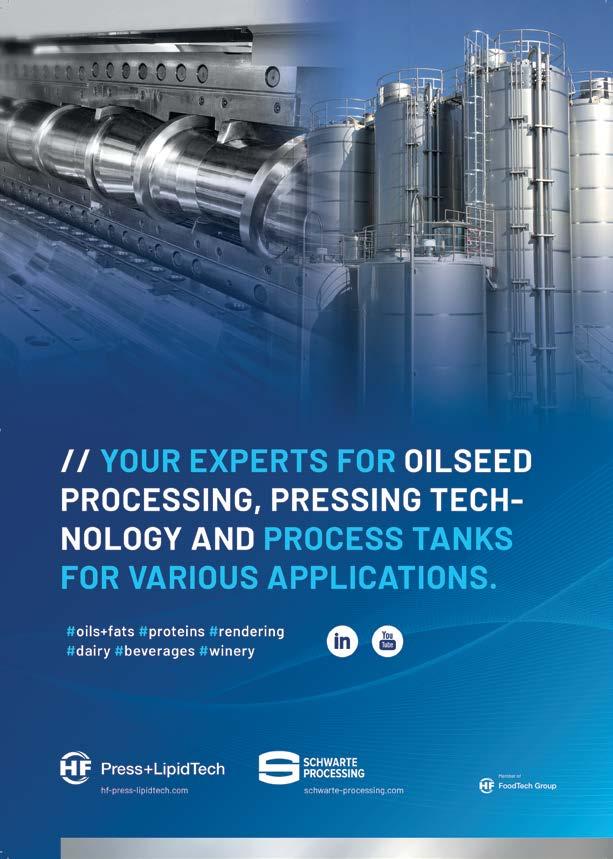

YUNSA - A TEXTILE INNOVATOR PIONEERING
YUNSA - A TEXTILE INNOVATOR PIONEERING
SUSTAINABLE FASHION
SUSTAINABLE FASHION
BUNGE - NOURISHING THE WORLD THROUGH AGRIBUSINESS INNOVATION
BUNGE - NOURISHING THE WORLD THROUGH AGRIBUSINESS INNOVATION
NAVIGATING THE NHS: CHALLENGES AND SOLUTIONS FOR THE NEXT DECADE
NAVIGATING THE NHS: CHALLENGES AND SOLUTIONS FOR THE NEXT DECADE
VOLUME 34/1 – 2024


The Ascendancy of the Right: A Contemporary European Political Landscape
In the past two years, Europe has witnessed a resurgent wave of right-wing politics, altering the continent's sociopolitical landscape. From the steady gains of populist movements to the consolidation of far-right parties, the rise of right-wing ideologies has sparked debates, polarization, and significant shifts in policy agendas across the region. This essay delves into the multifaceted factors contributing to this resurgence, examines its implications, and explores potential pathways forward.
Before delving into the recent rise of the right, it is crucial to understand the context in which this phenomenon has unfolded. Over the past decade, Europe has grappled with an array of challenges, including economic instability, immigration crises, terrorism, and a perceived erosion of traditional values. These issues have fueled discontent among large segments of the population, creating fertile ground for right-wing movements to flourish.
Central to the rise of the right has been the proliferation of populist narratives that capitalize on public disillusionment with mainstream politics. Leaders and parties on the right have adeptly tapped into widespread discontent, portraying themselves as champions of the common people against out-of-touch elites. By framing themselves as anti-establishment figures, they have successfully attracted support from those disillusioned with the status quo.
Immigration has emerged as a potent issue driving the rise of the right. Heightened levels of migration, particularly from conflict-torn regions in the Middle East and North Africa, have stirred anxieties about cultural dilution, security, and economic competition among segments of the European population. Right-wing parties have capitalized on these fears, advocating for
stricter border controls, limits on immigration, and the preservation of national identity.
Economic grievances have also played a significant role in the resurgence of the right. Despite the continent's overall economic recovery following the global financial crisis, many Europeans continue to face stagnant wages, unemployment, and widening income inequality. Right-wing movements have capitalized on these disparities, blaming globalization, free trade agreements, and immigration for the erosion of traditional industries and the decline of the middle class.
In the past two years, Europe has witnessed a notable resurgence of right-wing politics, fuelled by a complex interplay of factors including economic discontent, immigration concerns, and disillusionment with the political establishment.
The United Kingdom's decision to leave the European Union, commonly known as Brexit, has reverberated across the continent, emboldening eurosceptic and nationalist movements. Brexit has served as a rallying cry for those disillusioned with the EU's bureaucratic structures, perceived infringement on national sovereignty, and policies on immigration and trade. The success of the Leave campaign has inspired similar movements in other European countries, amplifying calls for reform or outright departure from the EU.
The rise of the right poses profound implications for European politics, society, and
governance. While right-wing parties have enjoyed electoral success and expanded their influence, their ascent has also exacerbated divisions within societies, fostered xenophobia and intolerance, and strained relations between member states of the EU. Moreover, the erosion of centrist consensus politics threatens to undermine the stability and cohesion of democratic institutions.
Addressing the root causes of the rise of the right requires a multifaceted approach that combines economic policies aimed at reducing inequality, comprehensive immigration reform that balances humanitarian concerns with security interests, and efforts to rebuild trust in democratic institutions. Moreover, mainstream political parties must engage with disillusioned voters, offer credible alternatives to right-wing populism, and demonstrate a renewed commitment to addressing the legitimate grievances of their constituents.
In the past two years, Europe has witnessed a notable resurgence of right-wing politics, fuelled by a complex interplay of factors including economic discontent, immigration concerns, and disillusionment with the political establishment. While the rise of the right has reshaped the continent's political landscape, it has also exposed deep-seated societal divisions and governance challenges. As Europe navigates this turbulent terrain, it is imperative for leaders, policymakers, and citizens alike to confront these issues head-on, uphold democratic values, and strive for inclusive and equitable societies. Only through concerted efforts to address the underlying grievances and bridge ideological divides can Europe chart a path towards a more stable, prosperous, and harmonious future.
Industry Europe 3
n
Business
INDUSTRY EUROPE
Poland
Magdalena Grzempczyńska
110 Boundary Road, Norwich NR6 5JE, United Kingdom
Tel: +44 1133 281 173
Email: studio@industryeurope.net Web: www.industryeurope.com LinkedIn: www.linkedin.com/company/industry-europe

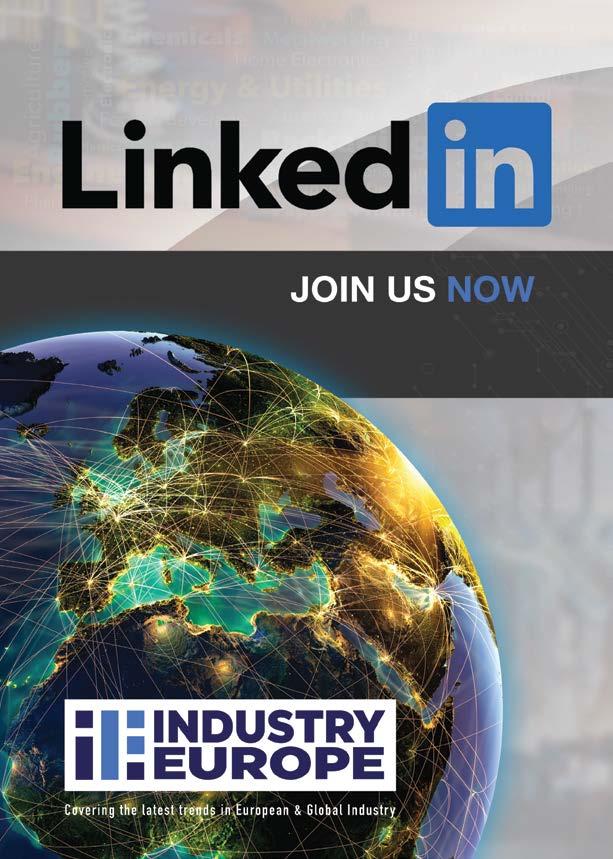
CONTENTS VOL 34/1 Comment 3 Editorial: The ascendancy of the right: A contemporary European political landscape Focus on – healthcare 6 Navigating the NHS: Challenges and solutions for the next decade Focus on – Consumer Goods 8 Unraveling the impacts: how Brexit redefined consumer goods in the UK Aerospace & Defence 10 Aerospace & Defence news The latest developments in the sector Chemicals & Biochemicals 12 Chemicals & Biochemicals news The latest developments in the sector Construction & Engineering 14 Construction & Engineering news The latest developments in the sector Consumer Goods 16 Nourishing the world through agribusiness innovation Bunge 20 A textile innovator pioneering sustainable fashion Yunsa 24 Consumer Goods news The latest developments in the sector Energy & Utilities 26 Energy & Utilities news The latest developments in the sector Healthcare 28 Healthcare news The latest developments in the sector Metals & Mining 30 Forging excellence: The legacy & vision in steel innovation & sustainability Feralpi Group 34 Metals & Mining news The latest developments in the sector Politics & Economics 36 Politics & Economics news The latest developments in Politics and Economics Technology & Innovation 38 Technology & Innovation news The latest developments in Tech and Innovation Transportation 40 Transportation news The latest developments in the sector Editorial Director Roger Sullivan Profile Writers Romana Moares Dariusz Balcerzyk Emma-Jane Batey Director of Sale & Business Development
Pozoga
Katarzyna
Partner,
Art & Design studio@industryeurope.net Editorial Office editor@industryeurope.net Accounts accounts@industryeurope.net Industry Europe
MAX MEDIA GLOBAL LTD.
© Industry Europe 2024 No part of this publication may be reproduced in any form for any purpose, other than short sections for the purpose of review, without prior consent of the publisher. 4 Industry Europe


FOCUS ON – HEALTHCARE 6 Industry Europe

NAVIGATING THE NHS: CHALLENGES AND SOLUTIONS FOR THE NEXT DECADE NAVIGATING THE NHS: CHALLENGES AND SOLUTIONS FOR THE NEXT DECADE
As the cornerstone of healthcare in the United Kingdom, the National Health Service (NHS) faces a myriad of challenges over the next decade. From demographic shifts to technological advancements, the NHS must adapt to ensure the provision of high-quality care to all citizens. However, amidst these challenges lie opportunities for innovation and improvement. By addressing key issues and implementing strategic solutions, the NHS can navigate the complexities of the next 10 years with resilience and efficiency.
Aging Population: One of the foremost challenges facing the NHS is the aging population. With people living longer, there is an increased demand for healthcare services, particularly for chronic conditions and end-of-life care. This demographic shift strains resources and exacerbates waiting times for treatments and surgeries.
Solution: The NHS must invest in preventative care and community-based services to alleviate pressure on acute care facilities. By promoting healthy aging initiatives and integrating social care with healthcare, the NHS can better support older adults while reducing the burden on hospitals.
Health Inequalities: Disparities in health outcomes persist across socio-economic groups, ethnicities, and geographic regions. These inequalities are often rooted in social determinants such as income, education, and access to healthcare services.
Solution: The NHS should adopt a targeted approach to address health inequalities, focusing on upstream interventions that tackle root causes. This may involve partnerships with local authorities, community organizations, and public health agencies to implement tailored interventions that address specific needs within marginalized populations.
Workforce Shortages: The NHS faces chronic shortages of healthcare professionals, including doctors, nurses, and allied health professionals. This shortage is projected to worsen over the next decade, fueled by factors such as retirement, workload pressures, and Brexit-related immigration restrictions.
Solution: The NHS must prioritize workforce planning and investment in education and training programs to attract and retain healthcare professionals. This includes incentivizing careers in underserved specialties and regions, as well as promoting flex ible working arrangements and career development opportunities.
Digital Transformation: While technological advancements offer opportunities to improve healthcare delivery, the NHS faces challenges in adopting and integrating digital solutions effectively.
Issues such as interoperability, data security, and digital literacy hinder the widespread adoption of digital health technologies.
Solution: The NHS should prioritize investments in digital infrastructure and interoperable systems to streamline workflows and enhance patient care. This includes initiatives such as electronic health records, telemedicine services, and artificial intelligence tools to support clinical decision-making and improve efficiency.
Financial Pressures: The NHS operates within a constrained financial environment, with increasing demand for services amid limited funding growth. Budgetary constraints often result in difficult decisions regarding service provision, workforce recruitment, and capital investment.
Solution: The NHS must explore innovative funding models and efficiency measures to maximize resources and deliver sustainable healthcare services. This may involve initiatives such as outcomebased funding, value-based procurement, and collaborative partnerships with the private sector and philanthropic organizations.
In conclusion, the NHS faces significant challenges over the next decade, ranging from demographic shifts to technological disruptions. However, by addressing key issues such as aging population, health inequalities, workforce shortages, digital transformation, and financial pressures, the NHS can navigate the complexities of the future with resilience and efficiency. Through strategic investments, innovative solutions, and collaborative part-


UNRAVELING THE IMPACTS: HOW BREXIT REDEFINED CONSUMER GOODS IN THE UK
Brexit, the United Kingdom's departure from the European Union, has unleashed a cascade of changes across various sectors. Among these, the realm of consumer goods has undergone significant transformations, reshaping supply chains, pricing dynamics, and consumer experiences. This essay delves into the multifaceted effects of Brexit on consumer goods entering the UK, exploring both the challenges and opportunities that have emerged in its wake.
Supply Chain Disruptions
One of the most palpable effects of Brexit on consumer goods has been the disruption of supply chains. Previously seamless flows of goods between the UK and the EU have encountered barriers in the form of customs checks, tariffs, and regulatory divergence. These disruptions have led to delays in delivery times, increased transportation costs, and stock shortages for certain products.
Price Volatility
The volatility in pricing has been another prominent consequence of Brexit on consumer goods. Fluctuations in exchange rates, coupled with tariffs and additional administrative costs, have exerted upward pressure on prices. As a result, consumers have faced higher costs for imported goods, ranging from everyday essentials to luxury items. The inflationary pressures stemming from Brexit-induced price hikes have strained household budgets and altered consumption patterns.
Regulatory Hurdles
Brexit has ushered in a new regulatory landscape for consumer goods entering the UK. With diverging standards and regulations between the UK and the EU, businesses must navigate a complex web of compliance requirements. This includes adhering to different product safety standards, labeling regulations, and certification
FOCUS ON – CONSUMER GOODS
8 Industry Europe

processes. The increased regulatory burden has added layers of complexity to the importation of goods, requiring businesses to invest resources in ensuring compliance and mitigating risks.
Market Access Challenges
For businesses exporting goods to the UK, Brexit has posed significant challenges in terms of market access. Previously, EU-based companies benefitted from seamless access to the UK market under the single market and customs union. However, post-Brexit trade barriers have complicated market entry, leading to decreased exports and market share for some businesses. Moreover, the emergence of non-tariff barriers, such as customs procedures and documentation requirements, has further impeded market access for certain products.
Consumer Preferences and Behaviors
Brexit has also influenced consumer preferences and behaviors regarding the purchase of goods. Heightened uncertainty and economic instability have prompted consumers to reassess their spending habits and prioritize value for money. There has been a notable shift towards domestically produced goods, as consumers seek to support local businesses and mitigate the risks associated with importing goods from overseas. Additionally, concerns over product
availability and quality have prompted some consumers to stockpile essential items, exacerbating supply chain pressures.
Opportunities for Domestic Producers
Amidst the challenges posed by Brexit, there are also opportunities for domestic producers to thrive. The disruptions to supply chains and increased import costs have incentivized businesses to source inputs locally and invest in domestic manufacturing capabilities. This has the potential to stimulate economic growth, create jobs, and enhance the resilience of the UK's manufacturing sector. Furthermore, by tapping into consumer preferences for locally sourced goods, domestic producers can capitalize on shifting market dynamics and gain a competitive edge.
Conclusion
Brexit has reshaped the landscape of consumer goods in the UK, bringing about a myriad of challenges and opportunities for businesses and consumers alike. From supply chain disruptions and price volatility to regulatory hurdles and shifting consumer preferences, the effects of Brexit have been far-reaching and multifaceted. As businesses adapt to the new reality of post-Brexit trade, innovation, flexibility, and strategic planning will be essential in navigating the evolving consumer goods market in the UK. n
Industry Europe 9
New developments in the Aerospace & Defence
MilDef wins additional business from BAE Systems Bofors worth SEK 52 million

F
ollowing the framework agreement signed in February with BAE Systems Bofors, additional orders have now been signed for
FANUC & Loop
ruggedized hardware for the Archer artillery system. The orders include IT equipment such as displays, computers and switches, worth SEK 52 million. Deliveries will start in 2025.
The ten-year framework agreement is the starting point for a deeper cooperation between MilDef and BAE Systems Bofors. The orders now won are a natural continuation of the collaboration and concern volume orders of previously developed products as well as spare parts for existing systems.
"Our cooperation combines two Swedish defense companies that are specialists in their respective fields. MilDef is trusted to contrib -
ute with our expertise; to deliver future-proof IT systems that strengthen the protection of our society and we are proud of the way we cooperate with BAE Systems in Karlskoga," says Daniel Ljunggren, President and CEO of MilDef Group.
BAE Systems Bofors is part of BAE Systems, which has operations in the US, Sweden and the UK. BAE Systems Bofors manufactures artillery and gun systems and ammunition for land and naval applications. These include anti-aircraft gun systems and platform-mounted firing systems.
Visit: www.baesystems.com
Technology sign aerospace deal for largest robots ever ordered in UK
Aerospace automation specialist Loop Technology has signed a deal with FANUC UK for seven new robots – including four units of the largest industrial robot ever to be ordered in the UK, the FANUC M-2000iA/1700L.
Renowned as the strongest long-reach robot in the world, three FANUC M-2000iA/1700L six-axis units will be delivered to the University of Sheffield Advanced Manufacturing Research Centre (AMRC) for its new innovation facility in South Yorkshire. This is part of Project Compass (Composites at Speed and Scale), a larger £80m investment which includes an aerospace manufacturing R&D project delivered by a consortium of partners including Boeing, Loop Technology, Spirit AeroSystems and the AMRC. The Loop/AMRC deal also encompasses two further FANUC M-2000iA robots: a 1200L and a 900L model.
Loop Technology’s FibreLINE is a high rate preform manufacturing system for the aerospace sector.
As part of a separate project, another 1700L model, along with an additional 900L unit, have been ordered by Loop Technology to form part of a high-rate composite preforming cell for a North American aerospace client. This brings the total number of FANUC M-2000iA six-axis robots commissioned by Loop Technology for this latest order to seven.
Decarbonising the aerospace sector
The aerospace manufacturing sector is booming, with 3,850 aircraft orders being placed in 2023 – a global record, according to ADS, the trade association for the aerospace, defence, security and space sectors. However, there is also currently a global aircraft backlog of 15,753, which is the largest on record. Increasing the level of automation in aerospace manufacturing is one of the main ways to increase productivity and help to reduce this backlog, while also tackling one of the sector’s main challenges – decarbonisation.
The new AMRC innovation facility in Sheffield has been developed to help solve composites manufacturing challenges in order to meet future demand for lighter commercial aircraft and help the aviation industry reach net zero. It aims to de-risk and develop high rate sustainable structures, with the potential to reduce large component process times from around 40 hours to approximately four hours. The facility is expected to be completed by the end of 2024.
The building will be home to a raft of state-of-the-art equipment secured through a £29.5m grant from the Aerospace Technology Institute (ATI) Programme to support new capabilities, technologies and processes to reduce cost, waste, production time and associated carbon emissions.
Boosting productivity
The five FANUC M-2000iA industrial robots that have been ordered by Loop Technology for the AMRC facility will form part of Loop’s proprietary high-rate deposition cell, known as FibreLINE. This state-of-theart high rate preform manufacturing system, with FibreFORM at its centre, can pick composite sheets (plies) and form them into complex 3D double curvature profiles before placing them onto a tool, inspecting them and heat staking them ready for the next stage of the production process, at a rate of up to 200kg an hour. Traditional methods typically operate at 40kg/hr, so this is a significant improvement. Meanwhile, the National Composites Centre, which uses a different configuration of FibreLINE that includes FibreROLL, has stated they are on track to deliver 350kg/hr.
Market-leading size and reach
Loop Technology has also ordered two further FANUC M-2000iA robots to form part of a separate FibreLINE system, for a key North American aerospace customer looking to carry out R&D applications. Once built, the entire FibreLINE system will measure more than 20m in length. It will centre around FibreFORM, a 3D double curvature preforming gripper that weighs more than one tonne, meaning that heavy-duty industrial robots with a high payload and long reach are essential. With a 1.7 tonne payload capacity and 6.2m stroke, the M-2000iA/1700L provides maximum flexibility on operations involving large and heavy objects. Capable of lifting and positioning an entire car body, it is officially the strongest long-reach robot in the world, making it the ideal choice for Loop Technology both for their North American aerospace client, and for the AMRC innovation facility.
Continue reading at: www.industryeurope.com
10 Industry Europe NEWS
Airframe Designs helps to streamline data for customers

specialist Airframe Designs is leading the industry by investing in a state-of-the-art data planning system to become even more streamlined on behalf of its customers.
By investing in the latest Materials Requirements Planning (MRP) system, the company is helping to develop new efficiencies in their supply chain, saving time and cost.
The new system will help integrate information in purchasing, stock control, quotations and manufacturing and ensures accuracy of data, transparency and detailed communication across different operational functions.
Jerrod Hartley, CEO of Airframe Designs, said: “The integration of this advanced system marks a transformative step for Airframe Designs and our customers, helping us to leverage efficiencies in our processes and allowing for improved collaboration with partners and suppliers.
“Custom-designed to complement our unique operational framework, this software investment is pivotal to our commitment to data confidentiality, integrity, and availability delivering direct, substantial benefits to our customers.”
This follows investment into Airframe Designs’ advanced production facility with a second 3D printing machine - a state-of-the-art Stratasys Fortus 450mc - a new five-axis milling machine and new sophisticated resin printing technology to offer increased capability and quality of parts and tools for its increasing customer base.
The company has also become a member of Additive Manufacturing UK (AMUK) whose aim is to establish the UK as a world leader in the development and adoption of additive manufacturing.
The services offered by Airframe Designs meet the demand from the aviation and defence sectors to create new parts or re-engineer obsolete parts in an agile, cost-effective, and sustainable manner.
With polymer additive manufacturing technology, combined with 3D scanning and 3D modelling, the Blackpool-based company now offers creative solutions to complex engineering problems in the aviation and defence part market, including solutions for airframe tooling. This technology can also be adapted for other industries including space, nuclear, motorsport and rail.
Recent projects undertaken by Airframe Designs include the design and manufacture of several 3D printed tooling fixtures to aid the installation of external sensors onto the fuselage of a special mission military aircraft and the integration of new systems into heavy lift drone platforms.
The company has also been responsible for the conceptual design at a platform level for new uncrewed air-systems, test rig and tooling for electric vehicle propulsion systems and most recently the design and analysis of operator consoles for a special mission aircraft.
Acrylonitrile is essential for the production of carbon fibre, which is used in the aerospace, automotive, healthcare and sporting sectors. Acrylonitrile is also essential in water purification for millions of households serving billions of people worldwide.
INEOS Nitriles has today confirmed the world first sales of InvireoTM a new bio-based Acrylonitrile, an essential raw material necessary in the production of carbon fibre, which delivers significant environmental benefits in the transport and water treatment sector.
INVIREOTM Acrylonitrile is produced via a controlled and certified (ISCC+) mass balance route which allows INEOS Nitriles to offer customers products with a 90% reduction1 in their carbon footprint vs. conventional acrylonitrilebased products.
Carbon Fibre is increasingly used across a variety of applications as a lightweight yet extremely durable alternative to aluminium, titanium and steel. It is used widely in the automotive and aerospace industries, as well as for the production of sporting goods such as tennis rackets, golf clubs, and bicycles.
Gordon Adams, Business Director for INEOS Nitriles and INEOS Phenol businesses said: “This is a significant milestone in the delivery of INEOS Nitriles sustainability strategy. Our new bio-based acrylonitrile has the potential to significantly cut the carbon footprint of a variety of everyday industries. Consumers and businesses alike are looking for improved sustainability for their products, and this new acrylonitrile delivers that.”
As well as being a key component in the production of carbon fibre, acrylonitrile is used

in a variety of other applications that enhance and support everyday life, such as sporting goods It is also essential in water purification for millions of households serving billions of people worldwide.
INEOS is the world’s largest producer of Acrylonitrile and is the only producer operating in Europe, USA and Asia.
Visit: www.ineos.com
Industry Europe 11 NEWS INDUSTRYNEWS
Sales of INEOS Nitriles’ new world-first bio-based acrylonitrile for Carbon Fibre begin, offering 90% reduction in carbon footptint
Aerospace
AEROSPACE & DEFENCE
New developments in the Chemicals & Biochemicals
BASF at UTECH 2024: Ready for the circular economy with sustainable recycling solutions for polyurethanes
BASF is presenting new concepts and recycling methods for polyurethanes at UTECH in Maastricht. The leading international trade fair and conference for the global polyurethane industry will take place from April 23-25 in Maastricht, NL. Circular economy is one of the major topics in all PU sectors. BASF offers new, sustainable material developments and recycling methods for various industries, which will be presented at the BASF stand, E20.
BASF presents a new generation of flexible PU foams suitable for thermoplastic recycling at the end of their life cycle. These new meltable PU foams combine the advantages of recyclability with the comfort properties of conventional PU foams. The foams can be 100% recycled and used as a raw material for new foams. This is made possible by a recycling process developed by BASF, in which the old foam is transformed into a new polyol in an energy-efficient process. "With the development of our 'designed-for-recycling'-foam, we have a new type of product that makes it possible to use polyurethane waste as a raw material for new foams," says Dr. Lukas Wilm, R&D PU Flexible Foams, BASF Polyurethanes. After its first service life, the foam can be returned to the material cycle and used for new products in various application areas such as the automotive, footwear and furniture industries.
PU meets design: Vitra uses recyclable PU in first furniture pieces
Sustainability is at the centre of activities of Swiss furniture manufacturer Vitra. This is why its products are designed to be particularly durable and recyclable at the end of their lifespan. "We strive for a closed material cycle for our product lines. With the new PU foams, we can finally produce recyclable upholstery for our office chairs, armchairs and sofas," explains Harald Gerwig, Global Head of Technics, Vitra.
Next exit circular economy: ZF Lifetec develops recyclable steering wheel
Recyclable PU foam also offers enormous potential in the automotive industry. On aver-

even further and, together with BASF, has developed a first steering wheel prototype that contains ZF Lifetec production waste. "Our innovative PU enables waste-free production and a reduction in CO2 emissions," says Dr Mark Staniford, Marketing Transportation, BASF Polyurethanes. "It is important for our customers in the automotive industry to receive circular economy solutions from us, which we can now offer with the new PU."
The refrigerator of the future is recyclable
BASF introduces new circular economy concepts to enable the recycling of insulation materials in refrigerators. The use of the PU insulation material Balindur® in vacuum insulation panels(VIP) in combination with Elastocool®F reduces the number of materials to just one and offers first-class insulation for refrigerators. By avoiding inorganic VIP core materials, the recycling process of used refrigerators can be significantly simplified. To return polyurethane to the same material cycle, BASF has opted for a chemical recycling process developed jointly with its partners KraussMaffei, Rampf and Remondis.
PU rigid foams.
"We are developing an efficient process that makes it possible to reduce the use of fossil raw materials for the insulation of refrigerators," explains Dr Martin Baumert, Head of Technical Development Insulation Solutions, BASF Polyurethanes.
Ultrasim® celebrates 25 years as pioneer in material simulation
Powered by unique and ultra-fast simulation methods, extensive material data, and easyto-access web services, BASF’s computeraided engineering (CAE) competence Ultrasim® creates an unparalleled offering in the competitive landscape. As a pioneer in the field, BASF introduced the first integrative simulation capability for plastics in 1999, laying the foundation for what is today a strong global network. At UTECH, BASF showcases how its competence in polyurethane simulation enables customers to sustainably develop products that use molded foams, also with the help of two PU-specific Ultrasim® Web Services: The apps Foaming for 3D foaming simulation and VELA for predicting the EU energy label of a warm water tank.
12 Industry Europe NEWS
MOL inaugurates the largest green hydrogen plant of the region
MOLGroup has handed over a 10 megawatt capacity green hydrogen plant in Százhalombatta which is the largest in Central and Eastern Europe. The €22 million investment makes fuel production more sustainable: the plant will reduce the Danube Refinery's carbon dioxide emissions by 25 000 tonnes. MOL will be able to produce 1,600 tonnes of clean, carbon-neutral green hydrogen per year which opens a new chapter in hydrogen economy. The investment is in line with the MOL Group's SHAPE TOMORROW corporate strategy to make the region more sustainable, competitive and self-sufficient.
MOL Group’s goal is to provide the solutions for tomorrow: the green hydrogen plant in Százhalombatta, with a 10 megawatt electrolysis unit created by Plug Power produces around 1,600 tonnes of clean, carbon-neutral green hydrogen per year. The €22 million investment will reduce the carbon footprint of the Danube Refinery by more than 25,000 tonnes of carbon dioxide per
Innovation in
currently accounts for one sixth of the MOL Group's total carbon dioxide emissions. The plant will start producing in the second half of 2024: MOL will use the green hydrogen primarily in its own network for fuel production.
Plug Power's electrolysis equipment uses electricity from renewable sources to break down water into hydrogen and oxygen. This means that no polluting by-products are generated and, in fact, the plant produces 8-9 tonnes of pure oxygen per tonne of hydrogen. The US company has offered MOL an innovative and reliable technology: the hydrogen generators, optimized for the production of pure hydrogen, have almost 50 years of operational experience.
"MOL Group has reached another milestone: we can now produce green hydrogen without producing any greenhouse gases. Using this technology, we are able to achieve the same emissions reduction as if we took roughly 5,500 cars off the road overnight. Today, our new
will offer solutions for the whole industry and hydrogen mobility. After Száhalombatta, we will take the technology to the other two fuel production units of the group to make the fuel production process more sustainable at each of MOL Group's refineries" said József Molnár, CEO of MOL Group, at the inauguration ceremony of the new green hydrogen plant.
The investment is in line with the MOL Group's SHAPE TOMORROW corporate strategy which aims to make the region more sustainable, competitive and self-sufficient.
“We are thrilled to celebrate, in partnership with MOL, the inauguration of one of Europe's largest green hydrogen plants supporting a refinery," stated Plug CEO Andy Marsh. "As a potent way to reduce carbon emissions within refinery operations, we are proud to equip MOL with cutting-edge electrolyzer technology to efficiently produce green hydrogen. Together, we are advancing towards carbon neutrality, fostering greener operations, and propelling the hydrogen economy forward."
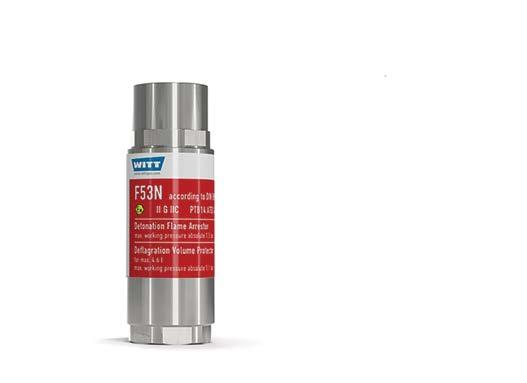
gas safety technology - PTB-type-approved
to ATEX
new device has an additional safety mechanism: thanks to the temperature-sensitive element, even sustained flashbacks are safely extinguished long before the internal temperature of the arrestors reaches a dangerous level. If a critical temperature is exceeded, a plastic body melts, closing the valve and stopping the gas supply. This ensures the highest level of safety for the user.
As a deflagration flame arrester, the F53Ndeto is ideal for protecting systems and system components with a maximum volume of 4.6 litres and a maximum absolute pressure of 1.1 bar, for example in the chemical industry. It is used as a detonation flame arrester with a maximum absolute pressure of 1.5 bar in small pipelines and to protect gas
The high-quality fitting is made of stainless steel (1.4404), the seals are made of FKM or FFKM. WITT offers the F53Ndeto with G1/4 female thread connections as standard. The maximum permitted temperature is 60 °C.
Industry Europe 13 NEWS
INDUSTRYNEWS
CHEMICALS & BIOCHEMICALS
New developments in the Construction & Engineering
ABB co-launches interoperability initiative to unlock Industrial IoT insights for more efficient and sustainable industry

Atthe Hannover Messe on April 23, 2024, found ing members ABB (including B&R), Capgemini, Microsoft, Rockwell Automation, Schneider Electric (including AVEVA) and Siemens announced collaboration on a new initiative to deliver interoperability for Industrial IoT ecosystems.
Hosted by the Linux Foundation and open to further interested parties, the Margo initiative draws its name from the Latin word for 'edge' and will define mechanisms for interoperability between applications, devices and orchestration software at the edge1 of industrial ecosystems. In particular, Margo will make it easy to run and combine applications from any ecosystem mem-
ber on top of the hardware and runtime system of any other member. Margo aims to deliver on its interoperability promise through a modern and agile open-source approach, which will bring industrial companies increased flexibility, simplicity and scalability as they undergo digital transition in complex, multi-vendor environments.
“Mastering efficiency, flexibility and quality faster than competitors is key to success in today’s industrial world,” said Bernhard Eschermann, CTO, ABB Process Automation. “Digitalization can help deliver on these benefits, but digital ecosystems require a robust, secure and interoperable framework at the edge, connecting operations and information technologies. For ABB, a long-standing advocate of open automation systems, driving a forward-thinking collaborative initiative like Margo is key to achieving this goal.”
Interoperability is key to digital transformation at scale
"The more sources you get data from, the better the decisions you can make," explained Florian Sch-
ABB control room, power distribution and robotics technologies help Metsä Fibre mill excel in productivity and efficiency
ABB’s control room environment, power distribution and robotics have been a part of Metsä Fibre’s technologically advanced sawmill’s pioneering levels of productivity and efficiency. The customer’s Rauma mill is Finland’s largest ever sawmill investment at €260 million and uses machine vision, artificial intelligence (AI) and integrated information systems for consistent quality and cost efficiency.
Building on a long-term relationship with parent company Metsä Group, ABB provided Extended Operator Workplace (EOW) tables for maximum ergonomics, visualization and communication, as well as electrical power distribution, transformers and robots. Since the technologies were commissioned a year ago the sawmill has turned out 40 logs per minute on a 130-meter sawline with a maximum sawing speed of 250 meters per minute, all managed from an ABB-designed central control room. The sawn pine timber is exported worldwide and can be used in construction –
including windows, doors and general joinery, woodworking, furniture and packaging.
“With the support of partners, including ABB, we are achieving productivity that is at least three times higher than what is possible across the rest of Europe,” said Jaakko Vierola, Technical Director of the Rauma sawmill project, Metsä Fibre. “The durability of components and the service ABB provides exactly when we need it are crucial.”
The electrical distribution system with medium voltage and distribution transformers was designed and delivered by ABB. ABB’s robots, motors and drives were connected to other equipment, with 1,000 variable speed drives considered to be crucial to automation optimization. The overall speed of the process is also due to a group of six robots equipped with machine vision.
Metsä Fibre and ABB specialists have worked together to maximize automated data collection through a third-party automation system. The strategy has been to use high levels of monitoring for quality and perfor-
neeberger, CTO of ABB's Machine Automation division (B&R). "Yet, while the benefits of digitalization increase with scale, so do the challenges of navigating heterogeneous industrial ecosystems. That's why interoperability is so crucial to unlocking the full potential of digitalization. It empowers organizations to adopt and scale Industrial IoT solutions at full speed without large teams of IT specialists."
In March 2024, ABB became a member of the Linux Foundation. This will enable the company to further enhance efforts in promoting open community collaboration, helping unlock innovation and enable better products and experiences for customers. This further strengthens ABB’s commitment to open standard based systems.
In a live panel discussion at the Hannover Messe, representatives from the six founding members met to present their vision for edge interoperability in the Industrial IoT and appeal to like-minded industry peers to join the community and contribute to building a meaningful and effective standard.
A recording of the panel discussion will be available at www.margo.org.
mance, minimize wood waste through sawing and sizing optimization and eliminate manual handling through robots and automatic loading at the 24/7 mill. The sawmill’s by-products such as wood chips, sawdust and bark are used to produce pulp and bioenergy.
“The Rauma sawmill operates much like a process industry plant, where equipment cannot be maintained at night or on weekends, but electrical devices must always be reliable,” said Esa Kivioja, Industry Segment Manager for ABB in Finland. “Here, we implemented the sawmill's power distribution with the same quality standards as we did in Metsä Fibre's bioproduct mills in Äänekoski and Kemi. This is a whole new concept in mechanical forest industry facilities.”
“The energy efficiency of motors and other electrical equipment also plays a role. The impact of ABB's deliveries is even more evident in the fact that production can continue without disruptions, and there is no idle time for the equipment.”
To support the Metsä Fibre team and the installed technologies on site, ABB also offers its spare parts and spare equipment services, as well as technical support.
14 Industry Europe
NEWS
Yokogawa Upgrades the CENTUM VP Integrated Production Control System
Yokogawa Electric Corporation (TOKYO: 6841) announces the May 31, 2024 release of CENTUMTM VP R6.11.10, an enhanced version of the CENTUM VP integrated production control system that is a core product in the OpreX™ Control and Safety System family of solutions.
With this new version of CENTUM VP, plant uptime is improved through the addition of a redundancy function to a new IO card that supports communications via the PROFINET communications protocol for industrial networks. Furthermore, to reduce project costs and improve efficiency in plant operations, functional enhancements have been made to the Unified Alarms and Conditions Server (UACS) and the CCC InsideTM for the Yokogawa CENTUM VP compressor control solution.
Development Background
PROFINET is one of the most widely used Ethernet-based industrial communications protocol worldwide, boasting superb real-time performance. In 2019, Yokogawa developed an IO card that supports PROFINET. While this enabled the monitoring of the operation of PROFINET-compatible devices from CENTUM VP, more needed to be done to improve reliability and uptime. To meet this need, Yokogawa has developed a new PROFINET IO card that supports a redundancy function, and by doing so, has made high reliability and high uptime a reality.
This new CENTUM VP release also features functional enhancements to the UACS and the CCC InsideTM for the Yokogawa CENTUM VP compressor control solution that will improve the efficiency of operations and engineering at plants.
Product Features
1. PROFINET IO card redundancy support for greater reliability and increased uptime
To improve plant uptime, an S2*1 redundancy function has been added to the new PROFINET IO card, enabling its use in a redundant configuration. Thanks to this and enhancements that have been made to the card’s network diagnostics function, this device has been certified by a third-party agency as having all the PROFINET functions for Conformance Class*2 B (CC-B), including the system redundancy that is so important in process control. By supporting the use of NAMUR NE107*3 compliant self-diagnostic information from devices that support PA Profile 4.0*4 and enabling the use of a motor control center that centrally controls motor power sources, remote I/O and Ethernet Advanced Physical Layer (Ethernet-APL) compatible device operation monitoring are also now possible, and this expands the scope of control that is possible with a single control system.
2. Improved plant operational efficiency with alarm management that supports NAMUR NA102
When a specific alarm has been suppressed in the UACS, the suppression status can now be displayed in the Human Interface Station (HIS) graphics. By enabling the implementation of alarm management in compliance with NAMUR NA102*3, this can help to improve operational efficiency throughout a plant.
Continue reading at: www.industryeurope.com
30 years of innovative laser technology from northern Germany - eurolaser celebrates its anniversary
Many success stories have started in a garage. This was also the case when Matthias Kluczinski and his partners at the time founded eurolaser in 1994. They worked late into the night assembling the first production machines based on laser technology in the garage, while during the day they looked for customers. Today, eurolaser is a globally active company and is one of the market leaders for large-format laser systems for cutting, engraving and marking in non-metal processing. These include plastics such as polyester or acrylic, wood and MDF, textiles and composites as well as many other materials. However, one thing has not changed since the company was founded: eurolaser's systems are productive, durable and simple. Reliability, long-term commitment and open communication are therefore clear core values of the company philosophy.
Shaping success stories worldwide since 1994
September 2024 marks the 30th anniversary
of the founding of eurolaser. Over the years, around 1,500 laser systems have been installed all over the world and numerous customer success stories have been actively shaped. The medium-sized company from Lüneburg now counts well-known companies among its customers. Products include shoes, textile advertising banners, high-tech films for space research, car interiors, furniture, signs, flags and banners, toys, sunshades, filters, sensor films and much, much more. The potential applications for laser systems are far from exhausted.
"Our great strength is listening. Our customers recognise themselves in the solutions because they are based on their ideas and requirements. New developments are inspired by our customers' wishes," says Kim Dittmer, daughter of founder Matthias Kluczinski and part of the management team, adding: "If we don't have the right solution in our portfolio, we develop it together. Sharing ideas and listening to each other is extremely important. Our
commitment and expertise form the cornerstone of this. However, the driving force behind our development has always been satisfied and successful customers, and this will not change in the future. We continue to grow - together with our customers and their challenges."
The secret of success is above all quality and modularity. Laser systems from eurolaser are extremely durable and flexible. "It's something very special for me that the machine at our first customer is still running reliably today!" says Matthias Kluczinski, Managing Director and founder of eurolaser. This quality awareness is deeply rooted in the company and can be found in many details, both in the technology and in everyday company life. The pursuit of innovation and successful solutions currently drives around 100 employees in Lüneburg to constantly look at things from different angles in order to find and implement production-relevant solutions. As a result, laser technology has been successfully exported to local markets as well as the global market as a cutting-edge technology of German mechanical engineering.
Continue reading at: www.industryeurope.com
Industry Europe 15 NEWS INDUSTRYNEWS CONSTRUCTION & ENGINEERING
NOURISHING THE WORLD THROUGH AGRIBUSINESS INNOVATION
In the ever-evolving landscape of agribusiness, few companies stand as prominently as Bunge Limited. Established in 1818, Bunge has carved out a remarkable trajectory, evolving from a humble trading company to a global powerhouse in agriculture and food. With a commitment to sustainability, innovation,






Bunge’s journey began in Amsterdam, where Johann Peter Gottlieb Bunge established a small trading company. Over the centuries, the company expanded its reach, navigating through economic shifts, geopolitical changes, and technological advancements. Today, Bunge operates in over 40 countries, with a diverse portfolio spanning from farming and processing to distribution and marketing.
Core Businesses
Bunge operates through five core segments:
Agribusiness: Bunge’s agribusiness segment encompasses the sourcing, processing, and distribution of agricultural commodities such as soybeans, wheat, corn, and sugar. With a global network of farmers, suppliers, and processing facilities, Bunge plays a vital role in ensuring a stable food supply chain.
Edible Oil Products: This segment focuses on the production and distribution of edible oils, fats, and related products. Bunge’s portfolio includes household brands like Mazola and a range of specialty oils catering to diverse culinary needs.
Milling Products: Bunge’s milling products segment specializes in the production of wheat flour and related products, serving both commercial and consumer markets. Through state-of-the-art milling
facilities, the company delivers quality ingredients to bakeries, food manufacturers, and consumers worldwide.
Sugar and Bioenergy: Bunge’s sugar and bioenergy segment involves the cultivation, processing, and marketing of sugar and ethanol products. With a commitment to renewable energy, Bunge harnesses sugarcane’s potential to produce ethanol, electricity, and other sustainable solutions.
Fertilizer: Bunge’s fertilizer segment focuses on the production and distribution of fertilizer products, supporting agricultural productivity and soil health. By providing essential nutrients to crops, Bunge contributes to sustainable farming practices and food security.
Innovation and Sustainability
Bunge is at the forefront of innovation in agribusiness, leveraging technology to optimize processes, improve efficiency, and reduce environmental impact. From precision agriculture and digital farming solutions to advanced processing techniques, the company continuously seeks new ways to enhance productivity while minimizing resource consumption.
Sustainability is a cornerstone of Bunge’s operations, guiding its approach to environmental stewardship, social responsibility, and economic viability. Through initiatives like responsible sourcing, water conservation, and carbon footprint reduction, Bunge strives to cre-
Industry Europe 17
CONSUMER GOODS


ate a more sustainable food system that benefits both present and future generations.
Community Engagement
Bunge is deeply committed to the communities where it operates, recognizing the integral role of local stakeholders in its success. Through various social responsibility programs, Bunge supports education, health, and economic development initiatives, empowering individuals and communities to thrive.
The company also prioritizes safety and employee well-being, implementing rigorous standards and training programs to ensure a safe working environment for all employees.
Global Reach and Market Leadership
With a presence in over 40 countries and a workforce spanning diverse cultures and backgrounds, Bunge’s global reach is unparalleled in the agribusiness sector. This expansive footprint, coupled with a relentless pursuit of excellence, has propelled Bunge to the forefront of the industry, earning it a reputation as a trusted partner and market leader.
As Bunge continues to expand its reach and explore new opportunities, its unwavering commitment to innovation, sustainability, and community engagement will serve as guiding principles, ensuring that the company remains at the forefront of agribusiness innovation for years to come.
Challenges and Opportunities
While Bunge has achieved remarkable success, it faces a myriad of challenges in an increasingly complex global market. Fluctuations in

18 Industry Europe

commodity prices, regulatory changes, and geopolitical uncertain ties can pose significant risks to the company’s operations. However, these challenges also present opportunities for innova tion and growth. By diversifying its product portfolio, expanding into new markets, and embracing emerging technologies, Bunge can position itself for long-term success in a rapidly evolving industry.
Looking Ahead
As Bunge continues to navigate the dynamics of the agribusiness landscape, its commitment to innovation, sustainability, and community engagement remains unwavering. With a rich history spanning over two centuries, Bunge is poised to continue its legacy of nourishing the world while driving positive change.
In an era where food security, environmental sustainability, and social responsibility are paramount, Bunge’s role as a global leader in agribusiness is more critical than ever. By embracing innovation, fostering partnerships, and staying true to its values, Bunge is wellpositioned to shape the future of agriculture and food for genera tions to come.


CONSUMER GOODS

A TEXTILE INNOVATOR PIONEERING SUSTAINABLE FASHION
In the dynamic world of textiles, where trends evolve rapidly and consumer preferences shift, Yunsa stands out as a beacon of innovation and sustainability. Founded in 1984 in Turkey, Yunsa has emerged as a global leader in textile manufacturing, renowned for its commitment to quality, creativity, and environmental stewardship. With a diverse portfolio spanning from luxury fabrics to technical textiles, Yunsa continues to push the boundaries of possibility, shaping the future of fashion and textiles.

Yunsa’s journey began over three decades ago, driven by a vision to redefine the textile industry through innovation and craftsmanship. From its humble beginnings as a small textile workshop, the company has grown into a powerhouse, with a presence in over 50 countries and a reputation for excellence that extends far beyond its Turkish roots.
Innovative Solutions
At the heart of Yunsa’s success lies its relentless pursuit of innovation. The company invests heavily in research and development, leveraging cutting-edge technology and creative talent to develop innovative solutions that meet the evolving needs of the market. Whether it’s pioneering new textile blends, developing sustainable production processes, or creating advanced performance fabrics, Yunsa is at the forefront of textile innovation.
Sustainability as a Core Value
In an era where sustainability is increasingly important to consumers and stakeholders alike, Yunsa has made sustainability a cornerstone of its business strategy. The company is committed to minimizing its environmental footprint throughout the entire

production process, from sourcing raw materials to manufacturing and distribution. By investing in eco-friendly materials, renewable energy, and water conservation initiatives, Yunsa strives to reduce its impact on the planet while setting new standards for sustainability in the textile industry.
Quality and Craftsmanship
Yunsa’s dedication to quality and craftsmanship is evident in every aspect of its operations. From the selection of the finest raw materials to the meticulous attention to detail in production, Yunsa ensures that every fabric bearing its name meets the highest standards of excellence. This commitment to quality has earned Yunsa a loyal following among designers, brands, and consumers who value superior craftsmanship and uncompromising quality.
Collaboration and Partnership
Yunsa believes in the power of collaboration and partnership to drive innovation and create value. The company collaborates closely with designers, brands, and industry partners to co-create innovative solutions that meet the unique needs of their customers. By fostering an environment of open communication, creativity,
CONSUMER GOODS
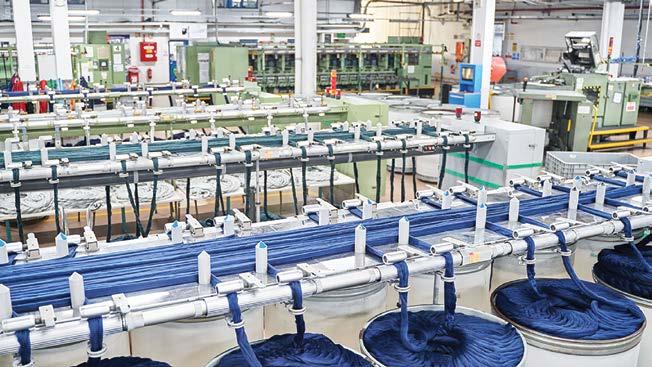
and mutual respect, Yunsa builds lasting partnerships that drive success for all stakeholders involved.
Global Presence

With a network of production facilities, distribution centers, and sales offices spanning the globe, Yunsa is well-positioned to serve customers wherever they are. From Europe to Asia, North America to Africa, Yunsa’s presence is felt in key markets around the world, enabling the company to meet the diverse needs of its global customer base.
Empowering Communities and Ethical Practices
Yunsa’s commitment to sustainability extends beyond environmental initiatives to encompass social responsibility and ethical practices. The company prioritizes the well-being of its employees
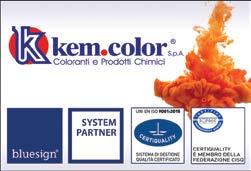
and the communities where it operates, implementing fair labor practices, promoting diversity and inclusion, and supporting local development initiatives. By providing training, education, and opportunities for advancement, Yunsa empowers individuals to thrive and contribute positively to their communities.
Furthermore, Yunsa actively engages in philanthropic efforts, supporting causes related to education, healthcare, and environmental conservation. Whether it’s through scholarship programs for aspiring textile professionals, healthcare initiatives for underserved communities, or environmental projects aimed at preserving natural habitats, Yunsa is dedicated to making a positive impact beyond the confines of its business operations.
As Yunsa continues to grow and evolve, its commitment to sustainability, innovation, and social responsibility will remain steadfast, driving positive change in the textile industry and beyond.

22 Industry Europe


The Future of Textiles
As Yunsa looks to the future, its commitment to innovation, sustainability, and excellence remains unwavering. The company will continue to invest in research and development, explore new technologies, and forge strategic partnerships to stay ahead of the curve in an ever-changing industry landscape. With a focus on creativity, quality, and sustainability, Yunsa is poised to shape the future of fashion and textiles for generations to come.


In a world where sustainability and innovation are paramount, Yunsa stands as a shining example of what’s possible when vision, passion, and purpose converge. By embracing sustainability as a core value and driving innovation at every turn, Yunsa is not only shaping the future of fashion and textiles but also leading the way towards a more sustainable and equitable world. n


Industry Europe 23 CONSUMER GOODS
New developments in the Consumer Goods
Is now the time to think about bag-in-box as an alternative to rigid plastic containers?
Manyindustries have traditionally used rigid plastic HDPE containers for everything from chemicals to detergents, in capacities ranging from 500ml to 25-litres. With strong pressure from shareholders, pressure groups, and the public to move away from plastic or at least reduce it, there has never been a more important time to seek an alternative solution.
“Working with Sweden-based packaging innovators Quadpak, Fenton Packaging Solutions is able to offer a wide range of UN-approved sustainable bag-in-box alternatives which are ideally suited for the majority of products in Packing Groups II & III, where rigid plastic containers have been the traditional packaging format of choice,” says Chris Warren, Fenton Packaging Solutions Managing Partner of Sales.
To transport products that qualify as hazardous, it is key to ensure that the packaging a company specifies is UN-approved and suitable for the intended application. Packaging marked as UN-approved is certified as designed, manufactured and tested to carry liquids or solids that are classified as dangerous materials.
Fenton’s Quadpak Cheertainer bag-in-box solutions are UN-approved for the transport of classified dangerous goods such as oils & lubricants, inks, industrial coatings and detergents and the design allows 99.9% dispensing of liquid products, without surging or glugging, dramatically reducing waste.
“The financial benefits of switching away from using rigid plastic are becoming more evident,” says Chris Warren. “The cost of disposal of used rigid plastic containers when they come to the end of their life is ever increasing and one result of that cost is that responsible businesses are having to further fund the collection and recycling costs. In addition, the cost of disposal is rising, particularly with the pending introduction of Extended Producer Responsibility (EPR).”
“Operators using rigid plastic jerry cans are increasingly realising that they are already liable for Plastic Packaging Tax (PPT) and also need to pay a professional waste company to take away and dispose of the empty containers.
Delivering sustainability gains across the supply chain
“Bag-in-box packaging solutions are made from
materials that are 100% recyclable and use around 80% to 90% less plastic than rigid containers,” says Chris Warren. “The knock-on effect is that the reduced amount of plastic reduces packaging waste by weight by a similar 80% to 90%.”
These packaging solutions deliver a 4:1 logistical transportation advantage, maximising load space and reducing fuel consumption and CO2/greenhouse gas emissions. Pre-filling, a bag-in-box packaging solution ships and stores flat, maximising both transportation and warehouse efficiency. When it comes to logistics, moving & handling and storage, there is a clear advantage for bag-in-box in terms of reduced storage. For example: a pallet of 20-litre bags holds 2,700 pieces, compared to a typical pallet of 20-litre jerrycans which contains 120 units. While the 20-litre bags require boxes to complete the pack format, it is typically one pallet of bags to 5 pallets of boxes. Fewer pallets support reduced transport requirements for incoming materials and also require less storage space in the warehouse or production and filling areas.
Continue reading at: www.industryeurope.com
Portable authenticity testing device detects food fraud at the point of sampling
BiaAnalytical Ltd have joined forces with trinamiX GmbH to launch a groundbreaking new portable authenticity testing service that will offer customers along the food value chain a high-speed indication of authenticity at the point of sampling, taking testing out of the lab and into the supply chain.
Portable authenticity testing device for herbs and spices
The newly launched service allows anyone in the food industry, whether producer, distributor, supplier, retailer, or auditor to instantly test the authenticity of their goods anytime, anywhere. It allows users to make informed decisions, save time and cost as well as improving quality control and minimizing health risk due to food fraud. The service is supported by Bia Analytical’s world class laboratory that will further analyse any atypical or non-consistent results.
Bia Analytical develops methods using chemometric modelling and AI to help reduce food business’ exposure to the risk of food fraud. Such solutions are fast becoming the preferred methods to reliably detect economically motivated adulteration. Looking for a way to test food samples for quality on site, Bia Analytica found the perfect partner in trinamiX – an expert in mobile Near Infrared (NIR) spectroscopy.
“The use of trinamiX PAL One, a truly mobile device to measure the authenticity of a sample, is a real game-changer within the food industry. It enables unlimited testing anywhere across the supply chain, giving end-to-end authenticity confidence across your products.” Says Simon Cole, Bia Analytical
CEO. “We are delighted to be partnering with trinamiX on this new service, they have been great to work with and very supportive and flexible as we have built our models. The PAL One device itself is easy to use, robust, and has been very reliable and consistent, this gives us and our customers great confidence in the results obtained from it.”
trinamiX’s solutions consist of a mobile handheld device, an easy-touse app backed by advanced cloud data analysis and a customer portal to manage results, download reports and export data. The Germanbased company works closely with partners from different fields to provide world class solutions allowing on-the-spot material analysis for enhanced decision-making across industries. Bia Analytical have been digitising their portfolio of lab-based herbs and spices authenticity methods to work on the trinamiX portable platform.
“It’s stunning to see how fast Bia Analytical has developed robust models to detect food fraud using trinamiX mobile NIR solution,” says Christian Doerr, Segment Lead Sales / Key Account Management at trinamiX. “This collaboration is a great example of how advanced technology combined with in-depth industry understanding and focus on the customer are poised to revolutionise their field.”
Bia Analytical are committed to their mission of becoming the future of authenticity testing, with new industry-leading authenticity testing methods under active development, helping protect the entire supply chain against fraud.
24 Industry Europe
NEWS
Interroll marks 65th anniversary by showcasing the technological evolution of its products at LogiMAT 2024 international trade fair
Interroll’s
LCP Autonomous Mobile Robotic (AMR) Top Module technology demonstrates our commitment to pushing boundaries and developing new products to further revolutionize the market. The LCP AMR Top Module offers a seamless interface between fixed installed conveyors and autonomous mobile robots and guarantees a smooth material flow. End users can trust in a complete solution, the highest level of customer comfort, and a fast and simple integration process.
Renewed Modular Pallet Conveyor Platform
The MPP reaches new heights in pallet handling. The latest development of the solution conceives a variant that boasts greater energy efficiency due to RollerDrives 48 V and MultiControl, thus enabling the smooth 1/2 handling of medium-weight goods. The solution is designed for horizontal transport of full and empty pallets and can handle a very wide range of sizes from EuroPallets to industrial pallets and half pallets.
Vertical Small Wheel Sorter (MX-V)
The Vertical Small Wheel Sorter is a highly energy efficient vertical sorter. It is particularly suitable for applications and sectors where gentle handling
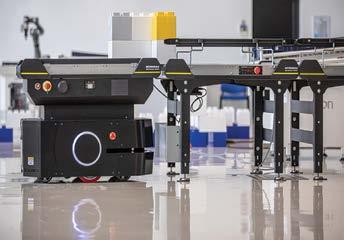
Asbetter and more comfortable working conditions. This new modular solution, which will also be on display in Stuttgart, is a logical extension of our sorter family. Interroll will also take the opportunity to meet potential future employees at LogiMAT with an HR presence to attract talented individuals and to gauge interest in establishing collaborations with universities and research institutions. Since
1959, Interroll has grown to become a global leader
the ideal opportunity to celebrate our milestone by showcasing the full variety of our solutions. At the Interroll booth, visitors will be able to see the complementary nature of our solutions and how they are designed with a collaborative concept in mind. LogiMAT 2024 runs from March 19 to 21 and Interroll will be exhibiting at Stand K41, Hall 1. Come and visit us!
Krall Kunststoff-Recycling Strengthens Presence in Europe
part of its increased commitment in Europe, Krall Kunststoff-Recycling has signed a disposal contract with distributor Sunclear, a leading supplier of semi-finished products such as sheets, multiwall sheets, corrugated sheets, tubes and profiles made of plastic, aluminium and composites in France. As part of this agreement, Krall is responsible for disposing of the recyclable materials generated during cutting or processing as waste at all 16 French branches of Sunclear and their customers. Krall supplies these collection points with its customized pallet cages, which are then filled and transported back to its own company.
The approximately 250 tons of plastic waste generated by Sunclear each year consist mainly of PC and PMMA, polyolefins (PP and PE), styrenics, PET and PVC, as well as engineering plastics and composites with aluminium. Krall processes the plastics into single-origin regrind, which can then be used as a direct substitute for virgin material in many applications as part of the recycling loop, saving considerable amounts of CO2 in the process.
Louis Krall, authorized signatory: "Sunclear attaches great importance to the integration of recycled raw materials and the search for environmentally friendly processes. Our modern technology of pure separation and processing using a high proportion of solar energy fits in perfectly with these objectives. For us,
this partnership means a considerable strengthening of our presence in France. Discussions with their Italian subsidiary and with Sunclear's customers suggest that we will continue to expand our activities in Europe. We are thus underlining our claim to be a top international address for the disposal and reprocessing of recyclable materials that were previously used in architecture, transportation, interior design and advertising, for example."
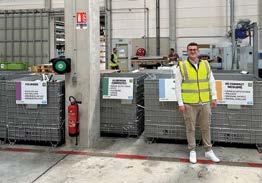
Industry Europe 25 NEWS INDUSTRYNEWS CONSUMER GOODS
New developments in Energy & Utilities
“We stand at a tipping point”: Wärtsilä calls for urgent action to enable more flexible power systems
Technology group Wärtsilä is calling for urgent action to enable more flexibility in power systems around the world, as we reach a crucial renewable energy tipping point.
According to the IEA World Energy Outlook1 the amount of renewables deployed globally is set to double by 2030, with inflexible generation forecast to decline rapidly, including a 20% reduction in coal and 34% reduction in oil generation, equating to over 2,300 TWh in lost generation.
At COP28, the United Nations Framework Convention on Climate Change (UNFCCC) agreed to transition away from fossil fuels and triple renewable power by 2030, which would make this tipping point even more pronounced.
Renewable energy will become the world’s largest electricity source by 20252, and it is vital that flexible technologies are deployed at scale and pace to support that transition to avoid widespread curtailment, increased prices, greater fluctuations, and higher emissions.
Anders Lindberg, President, Wärtsilä Energy, said: “We stand at a tipping point, with unprecedented levels of renewables being added globally over the next decade and huge volumes of traditional inflexible assets on the cusp of retirement.
“Over the past decade we have transitioned from renewables requiring financial support, to a position where inflexible assets, such as oil, coal and CCGTs (combined-cycle gas turbines) and nuclear are no longer viable without political support.
“This presents us with a unique opportunity: to add more renewable energy than ever before on to our grids, build the right level and right type of flexibility into our power systems and phase out inflexible assets while converting to sustainable fuels. Ultimately this will ensure a transition that fully phases out fossil fuels and is affordable, low carbon and resilient.
“The decisions that we make today in designing our power systems will echo for
generations, as we aim to tackle climate change and embed the right technologies to accelerate the deployment of renewables.”
To ensure we address this tipping point, Wärtsilä is calling on policy and decision makers around the world to:
• Choose the right technologies to accompany renewables, including grid balancing engines and energy storage to enable and accelerate the energy transition.
• Enable and encourage flexibility through regulations and policies that incentivise investments in flexible generation assets.
• Introduce shorter timeframes for power trading markets: Instead of trading in hourly periods, power trading markets should be operating in 15-minute, or even 5-minute, time resolutions.
Continue reading at: www.industryeurope.com
Bcontract
with ELM Solar of ELM Companies, an American utility services and renewable energy technology provider.

ELM Companies has invested $3 million into the facility and equipment to manufacture the Virtu product range. The expansion of ELM Solar and ELM Microgrid in Dallas is expected to generate 150 renewable energy jobs.
Naked Energy is expecting manufacturing for all North American projects to be handled entirely in the US by 2025 minimising reliance on foreign supply chains for its customer base in the US.
The partnership will see ELM Solar produce Naked Energy’s solar thermal technology aiming to manufacture 150,000 Virtu tubes by 2028.
On 18th April, Naked Energy and ELM representatives will be gathering with local officials and state representatives to celebrate the opening of the facility and provide tours of the plant.
The move deepens the already-successful partnership between the two companies, with ELM Solar already handling the North American distribution of Naked Energy’s VirtuPVT and VirtuHOT collectors.
As a result, Naked Energy has already seen substantial success in the country, with their first US installation at Creighton University launching in late 2023.
Naked Energy’s range of solar heat collectors are called Virtu. VirtuHOT is TÜV-certified and converts the sun’s energy into heat up to 120°C while its revolutionary solar PVT collector, VirtuPVT, simultaneously generates both PV electricity and solar heat up to 75°C.
The business has also developed a complementary platform, Clarity247, to monitor the performance of Virtu as well as integrated technologies like PV panels in real time.
Both Virtu technologies, recognized as the highest energy density collectors for flat roofs, have shown to be very well suited for the decarbonisation of heat in sectors with a year-long heat demand, such as hotels, leisure centres, universities, multi-dwelling properties and applications covering the lower range of industrial process heat.
The deal comes at a time when investment into solar energy is booming across the United States, being driven predominantly by the Inflation Reduction Act (IRA).
The act has already led to manufacturing almost doubling just one year in and has already seen $50 billion invested into clean energy technologies. The IRA also adds 10% in tax credits to the end customer for products manufactured in the USA.
Christophe Williams, CEO and co-founder of Naked Energy, said: “Our partnership with ELM has already paid huge dividends for both of us, and I’m very proud that we can deepen our relationship further with this manufacturing agreement. The United States is a key market for us, and we look forward to further decarbonising the United States’ heating systems.
Continue reading at: www.industryeurope.com
26 Industry Europe NEWS
Neste launches its Neste Impact solution for businesses to reduce their aviation emissions with sustainable aviation fuel
Neste has today launched its new emission reduction solution, Neste Impact, for businesses looking to reduce the carbon footprint of their air travel and transport activities. The solution is based on purchasing Neste MY Sustainable Aviation Fuel™ with which greenhouse gas emissions (GHG) can be reduced by up to 80%* over the life cycle of the fuel compared to using fossil jet fuel.
Neste Impact enables businesses to turn their climate targets into measurable actions to reduce their aviation related emissions. Neste helps a business translate its climate targets into specific, measurable targets to reduce emissions from the business’s air travel and transport. The targeted emissions reduction can be achieved by replacing fossil jet fuel with a corresponding amount of SAF purchased from Neste. Neste ensures the SAF is supplied to a partner airline and the purchased amount is verifiably used to replace fossil fuel. After
the SAF has been used, the business receives a third-party verified report, enabling it to credibly report the achieved emissions savings contributing to their sustainability targets.
“The urgency for climate action has never been greater, and businesses are increasingly looking for solutions that help them to reduce their aviation related carbon footprint. However, it can be a challenge to find a credible solution, particularly considering the ever-increasing reporting requirements and public demand for transparency. Neste Impact provides an easy to use solution for verified emission reductions, provided by the world’s leading producer of SAF," said Kristina Öström, Vice President Marketing, Brand and Partnerships from the renewable aviation business at Neste.
Neste Impact is aligned with the Aviation Guidance of the Science Based Targets initiative (SBTi), the gold standard in climate reporting. It follows a

book and claim approach, but unlike many other book and claim solutions, Neste ensures the SAF is delivered and used specifically in the aviation sector to replace fossil jet fuel, following the SBTi Aviation Guidance criteria. The related emission reduction achieved is third-party verified and further validated through the ISCC SAFc registry, enabling businesses to credibly report the achieved reductions towards their Science Based Targets or similar sustainability targets. The SAF volumes sold are not used to meet fuel mandates or other similar regulatory requirements on SAF use; instead, they provide additional emission reductions in aviation.
ABB and CERN identify 17.4 percent energy-saving opportunity in heating and ventilation motors
ABB
and CERN, the European Laboratory for Particle Physics, have identified significant energy-saving potential through a strategic research partnership focused on the cooling and ventilation system at one of the world’s leading laboratories for particle physics institute, located in Geneva, Switzerland. The study included energy efficiency audits which have helped to identify a savings potential of 17.4 percent across a fleet of 800 motors.
The research, conducted between 2022 and 2023, followed an agreement between ABB and CERN. This saw the partners developing a roadmap for reducing the energy consumption of the site’s cooling and ventilation system via data-driven energy efficiency audits. It has identified potential annual energy savings of up to 31 gigawatt-hours (GWh). If achieved, these savings could be enough to power more than 18,000 European households1 and could avoid four kilotonnes of CO2 emissions2, the same as planting over 420,000 trees3.
Energy efficiency audits work by evaluating the performance and efficiency of motors based on their operational data. Audits help large facilities like CERN to identify the most significant energy saving opportunities across whole fleets
of motors. CERN and ABB experts assessed a wide variety of data from motors in various cooling and ventilation applications. They combined data from multiple sources, including digitallyconnected motors, CERN’s SCADA system and data gathered directly from their pumps, piping, and instrumentation. The experts analyzed the efficiency of the whole system to provide insights to pinpoint the motors with the best business case for energy efficiency upgrades.
“We are proud to cooperate with CERN and support its ambition to conduct physics research with a low-carbon footprint, by helping them to achieve more energy-efficient operations of their cooling and ventilation systems,” said Erich Labuda, President of the Motion Services division at ABB. “This research project represents another step in CERN’s energy efficiency journey. As an institution with a large installed base of motors, working with CERN is a great example of how we can support in making a big impact in improving energy efficiency as part of the transition to a low-carbon society.”
Giovanni Anelli, Head of the Knowledge Transfer group at CERN said, “The collaboration with ABB was set up with the aim of optimizing the laboratory’s cooling and ventilation
infrastructure to reduce its energy consumption and is in line with CERN’s commitment to minimize its environmental footprint as well as to share the findings publicly for the greater impact on society. It’s a great example of a collaboration where each side brings their own contribution to the table. CERN brings its large-scale infrastructure and ABB contributes with its technology and service expertise. We are very happy with the final result of this research project as we have exceeded our goal of identifying a 10-15 percent energy efficiency improvement.”
“Cooling and ventilation systems are a fantastic first place to look for energy efficiency upgrades,” Labuda elaborated. “This is because they are often overdesigned, being specified to operate at a maximum load way above the average. In fact, we found one pump motor at CERN with an energy-saving potential of 64 percent. It is also important to not just evaluate motor efficiency, but the system as a whole – including the fans, condensers and cooling towers. This holistic approach supports the improvement of CERN’s overall energy efficiency and reliability.” Continue reading at: www.industryeurope.com
Industry Europe 27 NEWS INDUSTRYNEWS
ENERGY & UTILITIES
New developments in Healthcare
Global healthcare manufacturer
International healthcare manufacturer Vernacare has transformed production line efficiency after installing machine monitoring technology from FourJaw Manufacturing Analytics at its factory in Worksop, UK.
Vernacare, which produces infection prevention, clinical waste management and surgical products for healthcare customers in Europe and North America, installed FourJaw on its dry wipe production lines in 2023 to identify how efficiently machines were running and determine the root causes of downtime.
Machine data obtained with FourJaw provided insights into efficiency, enabling Vernacare to identify the main causes of unplanned downtime on its production lines. This information helped Vernacare’s operations and production managers work with their machine providers’ maintenance teams to address outstanding issues and make a business case to upgrade machine parts for improved uptime.
Vernacare turns to smart technology to drive efficiency
Vernacare has also gained a precise understanding of how long each production run would take to deliver target outputs, enabling it to plan more proactively and efficiently to meet customer demand. This approach enabled Vernacare to eliminate its production backlog, reduce the frequency of production changeovers, cut machine downtime by 20 per cent, improve on-time delivery rates, and almost eliminate the need for rush jobs and overtime.
Andy Toulson, Operations Manager at Vernacare, comments: “FourJaw has given us knowledge and the power to address key capacity challenges. We’ve removed all back orders and are now in a position to deliver orders on time for customers worldwide, a tangible benefit of our unprecedented increase in machine productivity, and we’ve also improved staff retention with a calmer, less stressful working environment where operators have autonomy to get on with the job.”
Communication Showdown: IP DECT vs. Digital Radio - Which Technology Reigns Supreme for Mobile Workforces & Lone Workers?
IPDECT and Digital Radio are both communication technologies that assist mobile workforces. They have similar functionality, for instance handsets can both support voice and messaging features, and both come with built in panic buttons and tilt sensors to protect lone workers. Either kind of platform can be networked too. So teams can communicate across multiple sites. Both can integrate with other 3rd party systems e.g. SCADA and BMS that can trigger site update messages and alarms to users’ devices. They can be used to open doors/gates directly from either a DECT phone or a Radio. Both offer ATEX handsets that can be used in intrinsically safe areas.
So if both platforms can do all of this, what can’t they each do, or what differences do they really have? In this match-up between these two communication technologies, we will assess which is the superior form of communication. Will it be IP DECT or will Digital Radio come out on top? Let the battle commence…
Round one: IP Digital Enhanced Cordless Telecommunications (IP DECT)
IP DECT provides users with the freedom to make and receive 1:1 telephone calls anywhere
on a site. It’s commonly used in many sectors like retail, manufacturing, care homes, healthcare, and more. These handsets tend to be smaller and lighter than radio, and have features like a phone book where users can store all their contacts’ and will show the “numbers” the user has called, received and missed. It is similar to a mobile phone.
Unlike radio, where communication tends to be kept to short messages and announcements with other radio users, DECT users can stay on a call for as long as they like as the platform can handle multiple, simultaneous calls without blocking the system. IP DECT can also integrate seamlessly to other voice networks – such as IP-based UCaaS phone networks. This makes the technology versatile and enables users to be far more contactable. This allows users to speak with other DECT users but also customers, suppliers and other employees.
DECT is generally a 1:1 communication platform, though it can also be enhanced to allow one-to-many- calls (similarly to radio) where voice messages can be broadcasted to colleagues by pressing and holding down a button (PTT) on the DECT handset.
Chris Iveson, CEO at FourJaw Manufacturing Analytics, comments: “Vernacare shows how a relatively small intervention can snowball to deliver much bigger operational and commercial business benefits to a wide range of stakeholders. We are thrilled to see our technology help such an innovative healthcare manufacturer improve its productivity and production processes, and the difference it has made to their customers and staff members alike.”

Round two: Digital Radio
Digital Radio helps users to communicate predominantly with other radio users on a 1-to-many basis. Unlike DECT, where users need to dial a number and wait till the call is answered before someone can speak, with radio, people simply push a button and talk. Colleagues will hear the announcement and can respond in similar fashion.
Radio can work back to back. This means that only the handsets are required in order to set the communication network up – no infrastructure is needed, like repeaters, to enable them work (though it can be enhanced with this technology). This makes radio solutions very quick to deploy too. Unlike DECT where multiple base stations are needed, with radio very large sites can often be covered with only one or two repeaters. These characteristics enable them to be used by businesses across almost all industry sectors, and they are commonly deployed both on and off site. This includes the same sectors that IP DECT is effective within, and more – such as oil and gas, utilities, mining, water treatment sites, and the construction industry.
Continue reading at: www.industryeurope.com
28 Industry Europe NEWS
Insights From The Identity Jedi for Shoring Up Healthcare's Cybersecurity Defenses
The frequency of cyberattacks targeting hospitals and health systems more than doubled from 2016 to 2021, exposing the protected health information of nearly 42 million patients. The healthcare industry is an attractive target for cybercriminals because it provides a treasure trove of data, from patients' personally identifiable information to an organization's proprietary trade secrets. David Lee, The Identity Jedi, Chief Evangelist, and Visionary for Tech Diversity, urges the healthcare sector to reprioritize the importance of cybersecurity measures to protect the welfare of its patients and its industry.
Healthcare is among the top seven targets of cyber thieves with its valuable cache of data and wellspring of potential victims. Since 2010, the healthcare industry has endured the highest data breach costs compared to other sectors, with each breach costing over $10 million in 2023. (2) David Lee, The Identity Jedi and Chief Evangelist and Visionary for Tech Diversity, observes, "Healthcare is an outlier in cybersecurity because they're often playing catch-up due to their reliance on closed-off technology that limits integrations with external partners, leaving them more vulnerable to cyber threats. The industry must venture outside its purview to gain third-party insights on fixing their Identity and Access Management (IAM) blind spots."
Healthcare records are worth up to 10 times more than stolen credit cards on the dark web because they offer more than just cash. The at-risk data includes patients' protected health information (PHI), financial details like credit card and bank account numbers, personally identifying information (PII) such as Social Security numbers, and intellectual property linked to medical research and innovation. (3) But that's not all. Fail-safe cybersecurity has become a matter of life and death. Ransomware and killware cyberattacks can pose lethal threats to hospitals and critical infrastructure. Ransomware typically extorts money by threatening the integrity of an organization's critical data. Killware, on the other hand, encompasses cyberattacks that cause physical harm, whether it's lethal or not. (4)
According to a Comparitech study, ransomware attacks on U.S. healthcare facilities since 2016 have led to approximately $77.5 billion in economic losses due to downtime. Each attack averages nearly 14 days and affects over 52 million patient records across 539 incidents involving almost 10,000 facilities. The study found that ransom demands varied from $1,600 to $10 million. (5)
The FBI has been sounding the cybersecurity alarm regarding the vulnerabilities in popular medical devices like insulin pumps, intracardiac defibrillators, and mobile cardiac telemetry due to outdated software and inadequate security features. Unscrupulous hackers can cause direct harm to patients by hijacking these devices using WiFi, Bluetooth, and other remote technology to alter readings or administer drug overdoses. (6)
The government has been taking steps to stem the tide of cyberattacks. The Cybersecurity & Infrastructure Security Agency (CISA) has developed a Zero Trust Maturity Model to transition to a zero trust architecture. (7) "Trust but verify" is the core principle of zero trust, where all components of a cybersecurity supply chain are deemed untrustworthy and, therefore, always vulnerable to internal and external threats.
Section 524B of The Consolidated Appropriations Act, 2023 ("Omnibus"), Ensuring the Cybersecurity of Devices, empowered the FDA to require medical device manufacturers to include a Software Bill of Materials (SBOM) with each device. (7) An SBOM includes a structured list of components, libraries, and modules comprising software and the supply chain. (9) By identifying software components and constantly monitoring the supply chain for potential breaches, organizations can pinpoint outdated or open-source software that may be susceptible to cyber breaches.
The Health Insurance Portability and Accountability Act of 1996 (HIPAA) pioneered patient data protection. HIPAA is a federal law that established national standards for protecting and disclosing sensitive patient health information. (10) In 2023, the HIPAA Journal emphasized the importance of identity and access management in the healthcare industry. IAM involves implementing a range of administrative, technological, and physical defenses to control access to resources and data. It ensures access is granted according to job roles, authority, and responsibilities, facilitating appropriate access for authorized individuals while preventing unauthorized entry. (11)
IAM consists of single sign-on systems, multifactor authentication, and privileged access management. These technologies also securely store identity and profile data and can perform data governance functions. Lee explains, "As cyberattacks increase, the healthcare industry responds with more integrated systems, which creates a larger attack surface for cybercriminals, with each

additional connected system offering a new avenue for attack. Healthcare has its own ecosystem, and it tends to self-medicate when it comes to cybersecurity, at its own peril."
A survey by the Healthcare Information Management and Systems Society discovered that healthcare organizations spend a paltry 7% of their budget on cybersecurity. Fifty-five percent of healthcare IT professionals reported that their organization had experienced a significant security breach in the last year, and 74% say hiring qualified cybersecurity professionals is a considerable challenge. (12)
The healthcare industry is more concerned with the health of their patients, hiring the best staff, scientific research, and discovering groundbreaking treatments that can save more lives. Cybersecurity becomes a significantly lower priority.
It's critical for the healthcare industry to find effective and affordable solutions to prevent a devastating attack on the life-saving care they provide. Lee emphasizes, "Cybersecurity technology like IAM, SBOMs, and zero-trust architecture, in and of itself, is not a magical elixir. It requires people with the right skills and expertise to implement it successfully. Healthcare needs to expand its trust circle to include cybersecurity professionals who can provide the urgent care the industry needs to protect itself and the millions of lives it serves."
About The Identity Jedi
David Lee transitioned from a software engineering background to become a harbinger of change and inclusivity in the tech world. With over two decades of experience, he has left his mark on government agencies, Fortune 500 companies, and numerous fields, specializing in identity and access management. Recognizing that for technology to truly transform the world, it must embrace diversity, David serves as an agent of transformation, inspiring individuals to unlock their full potential. His influential voice and actionable insights have solidified his reputation as a respected figure in the ever-evolving tech landscape. He is available for speaking engagements. When he speaks, people listen. He is The Identity Jedi. Visit www.iamdavidlee.com
Industry Europe 29 NEWS INDUSTRYNEWS
HEALTHCARE

FORGING EXCELLENCE: THE LEGACY AND VISION OF FERALPI GROUP IN STEEL INNOVATION AND SUSTAINABILITY
Established in 1968 in the serene town of Lonato del Garda, Italy, Feralpi Group has emerged as a global frontrunner in the production of steel and iron, boasting a legacy of over five decades marked by innovation, sustainability, and uncompromising quality in the fiercely competitive steel industry.
30 Industry Europe



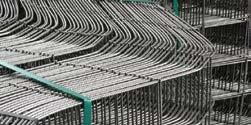
From its modest beginnings, Feralpi Group has undergone a remarkable transformation, evolving into a multinational powerhouse with a significant footprint across Europe and beyond. The company’s trajectory of growth has been shaped by strategic investments, astute acquisitions, and organic expansion initiatives, culminating in the establishment of multiple cutting-edge production facilities, each meticulously equipped with state-of-the-art technology to cater to a diverse range of customer needs.
At the core of Feralpi Group’s success lies its unwavering commitment to technological excellence. Recognizing the pivotal role of innovation in driving competitiveness, the company has consistently invested in the acquisition of cutting-edge equipment, the optimization of advanced processes, and the pursuit of groundbreaking research endeavours. By harnessing the latest advancements in steel production technology, Feralpi Group has not only enhanced operational efficiency and augmented productivity but has also steadfastly upheld its stringent focus on product excellence and quality assurance.
Moreover, sustainability lies at the heart of Feralpi Group’s corporate ethos. Driven by a profound sense of environmental responsibility, the company has spearheaded a diverse array of eco-conscious initiatives aimed at mitigating its ecological footprint and championing resource conservation. From the integration of energy-efficient technologies to the implementation of rigorous emissions control measures, Feralpi Group remains steadfast in its mission to forge a more sustainable future, characterized by enduring environmental vitality and resilience.
Customer satisfaction forms the cornerstone of Feralpi Group’s customer-centric philosophy. By cultivating robust partnerships and fostering transparent communication channels with its clientele, the company endeavours to deliver bespoke solutions that transcend expectations. Whether tailoring custom steel products to meet unique specifications or offering unparalleled technical support and expertise, Feralpi Group remains resolutely committed to delivering exceptional value and fostering enduring partnerships built on trust and mutual respect.

METALS & MINING
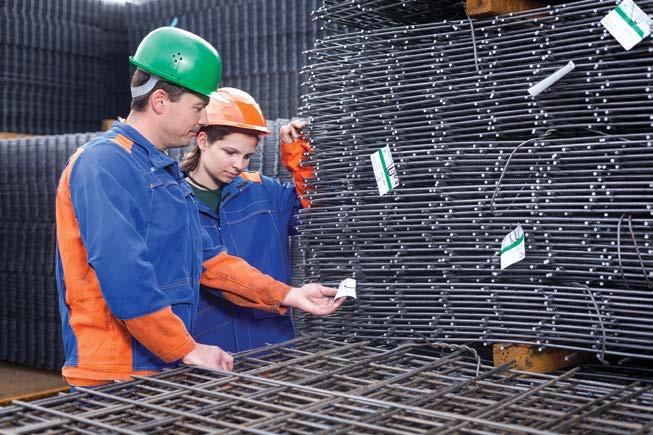
With operations spanning over 20 countries worldwide, Feralpi Group boasts a formidable global presence that endows it with a nuanced understanding of regional market dynamics, customer preferences, and regulatory landscapes. By leveraging the synergies inherent within its expansive network, the company adeptly navigates the complexities of the global marketplace, remaining agile and responsive to emerging trends and evolving customer needs.
Innovation permeates every facet of Feralpi Group’s operations, transcending mere production processes to encompass a holistic approach to research and development. Through relentless exploration of novel materials, pioneering techniques, and innovative applications, the company perpetually endeavours to push the boundaries of possibility, driving continuous improvement and catalysing industry-wide innovation.

At the heart of Feralpi Group’s success lies its unwavering commitment to its most valuable asset: its people. Recognizing the pivotal role of human capital in fostering innovation and driving sustainable growth, the company invests heavily in the ongoing training, development, and well-being of its workforce. By fostering a culture of inclusivity, diversity, and empowerment, Feralpi Group cultivates an environment wherein employees are empowered to unleash their full potential, driving collective success and innovation.
Beyond its business operations, Feralpi Group remains deeply committed to corporate social responsibility. The company actively engages in philanthropic endeavours, supporting local communities and charitable organizations, and spearheading initiatives aimed at effecting positive societal change. By championing social causes and giving back to the communities in which it operates, Feralpi

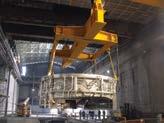
32 Industry Europe


Group seeks to leave an indelible imprint of compassion, empathy, and goodwill.
Throughout its illustrious history, Feralpi Group has weathered myriad challenges with resilience and fortitude. Whether navigating economic headwinds, market volatility, or global crises, the company has remained steadfast in its commitment to excellence, adaptability, and innovation.
At Feralpi Group, the commitment to innovation is underscored by a set of “non-negotiables” outlined in their research and development ethos. These principles include a dedication to sustainable development, prioritization of safety and health, adherence to ethical business practices, and a relentless pursuit of excellence. Upholding these non-negotiables ensures that Feralpi Group remains at the forefront of technological advancement while upholding its
This unwavering commitment serves as the foundation upon which Feralpi Group continues to drive innovation, shape the future of the industry, and deliver value to its customers worldwide.
Looking ahead, Feralpi Group remains poised on the cusp of boundless possibilities, guided by a clear vision for the future and fortified by its unwavering commitment to its core values. With a steadfast resolve to pioneer innovation, champion sustainability, and foster enduring partnerships, the company stands poised to shape the trajectory of the steel industry, driving growth, and delivering unparalleled value to stakeholders worldwide for generations to come.
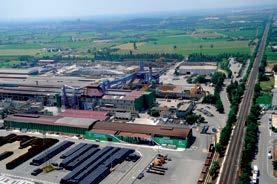
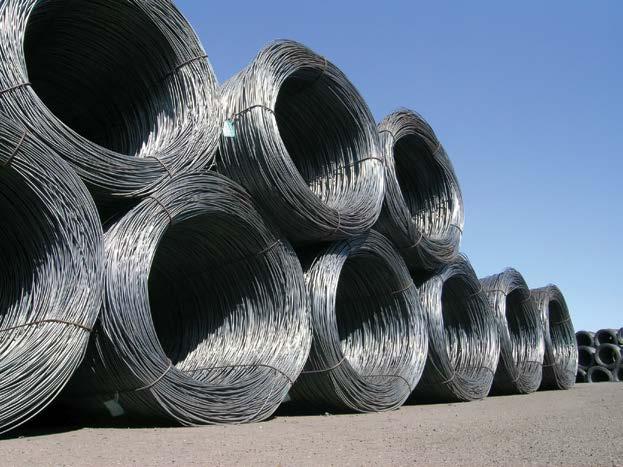
METALS & MINING
n
New developments in Metals & Mining
Boliden, Epiroc and ABB make first battery-electric truck trolley system for underground mining a reality
Boliden, Epiroc and ABB have passed a new technology milestone by successfully deploying the first fully battery-electric truck trolley system on an 800-meter-long underground mine test track in Sweden, with a 13 percent incline. This means the mining industry is a step closer to realizing the allelectric mine of the future, with sustainable, productive operations and improved working conditions.
The achievement of the collaboration in Boliden’s Kristineberg mine in northern Sweden marks a critical moment for the mining industry as it continues to face rising pressures to balance increased outputs of critical minerals and metals with lower carbon emissions and energy usage. Demand for minerals critical to society’s cleanenergy transformation is predicted to increase between 1.5 to seven times by 2030 according to the IEA1, making electrification a priority.
In tandem with reducing carbon emissions, the electrification of mining also promises improved health and safety for the industry’s workforce. By deploying this system, the col-
laboration partners aim to prove that the underground working environment can be significantly improved, with less emissions, noise and vibration while reducing the total cost per ton.
“Over the past three years, we have worked in close collaboration with the ABB and Epiroc teams to bring the electric mine of the future one step closer,” said Peter Bergman, General Manager Boliden Area, Boliden. “The most important thing for us is of course that the technology works in our own operations, but we also see added value that we together with our partners can drive technology development so that the system can be used in other mines. We are proud to have taken this concept to a live installment.”
Each partner has provided a unique set of expertise to this development process, clearly demonstrating the value of industry collaboration. Epiroc has added dynamic charging to its proven battery-electric Minetruck MT42 SG and battery system, and the trolley solution is
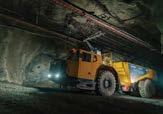
equipped with ABB’s DC converter, HES880 inverters and AMXE motors to enhance the power. The truck features a trolley pantograph connected to an overhead catenary line, a concept which is highly suitable for long haul ramps. The electric trolley line gives additional assistance to the battery-electric mine truck on the most demanding stretches up-ramp while fully loaded, enabling further reach and battery regeneration during drift, which increases productivity drastically for a mining operation.
ABB created the infrastructure from grid to wheel, including the electric truck trolley system design and the rectifier substation for the test track. The definition of standards and vehicle interface was jointly developed by the project partners. Continue reading at: www.industryeurope.com
Rio Tinto donates $1.5 million to support the people and community of Grindavík in Iceland

Rio Tinto has donated US$1.5 million to the Icelandic Red Cross to support the people and community of Grindavík in Iceland, who have been impacted by months of volcanic eruptions.
Since December, a series of volcanic eruptions has left 3,800 people homeless and damaged the community’s water and electricity supplies. Residents of Grindavík and neighbouring communities continue to feel social and economic impacts from these unprecedented events.
In the coming weeks, the Icelandic Red Cross will announce details of a project built around Rio Tinto’s contribution to provide support for impacted people and enhance the resilience of the community. The project will be managed in close collaboration with the Municipality of Grindavík and other affected stakeholders.
Rio Tinto Iceland General Manager Rannveig Rist said: “For 55 years, Rio Tinto has been an important member of Iceland’s closely knit community. We deeply empathize with those affected by the catastrophic eruptions in the Reykjanes peninsula, including some of our own employees. This is the largest donation Rio Tinto has made in Iceland and we are very proud to partner with the Icelandic Red Cross and the Municipality of Grindavík to bring relief to the community in this time of need.”
Icelandic Red Cross General Manager Kristín S. Hjálmtýsdóttir said: “This donation will enable the Red Cross to make a real difference for the people of Grindavík. A contribution of this magnitude to the Red Cross from a private company is unprecedented for projects in Iceland. It is an example of corporate social responsibility and how important it can be for society. The Red Cross and the Municipality of Grindavík have stood side by side through these difficult times and will continue to do so. There are indications that volcanic activity will continue to shape the lives of people in the Reykjanes peninsula into the future. This donation will help us better support the community and strengthen its resilience through this difficult period as it adapts to a new reality.”
Grindavík Mayor Fannar Jónasson said: “We would like to thank Rio Tinto for this initiative and this generous donation. The ISAL team has shown us great care and solidarity, stepping up to the plate when we need it most. We do not control the course of natural forces, but this kind of support helps us deal with their consequences and the pressing issues facing our community at present.”
34 Industry Europe NEWS
NEWS INDUSTRYNEWS
SABIC and Cybershield team up to advance use of plated ULTEM™ resin in aircraft parts
SABIC,a global leader in the chemical industry, today announced its collaboration with Cybershield, Inc., a U.S. supplier of metalized plastic components, to advance the use of plated ULTEM™ resins in aerospace applications. Through this collaboration, which will be featured at the upcoming NPE2024 and the 2024 Aircraft Interiors Expo (AIX), SABIC’s team shared with Cybershield their extensive expertise on injection molding of high-heat ULTEM resins. This training prepared Cybershield for successfully molding ULTEM 2310 resin into backshells for electrical connectors that are well suited for use in audiovisual (AV) control modules for commercial aircraft.
“These collaborations are the latest in our longstanding, multi-faceted relationship with SABIC,” said Dr. Stanley Walton, director, R&D and Sales & Marketing, Cybershield. “For instance, we previously worked with SABIC on the development of glass fiber-reinforced ULTEM EPR resins, which offer enhanced plating capability. Today, thanks to SABIC’s invaluable guidance on all aspects of processing ULTEM 2310 resin, we have expanded our molding capabilities beyond lower-temperature materials. Our customer, Russtech Engineering Co., Inc., is very happy with the components we are molding and plating, and we are now well positioned to pursue other applications for their growing inFlite™ Products Suite.”
Knowledge Exchange
As part of the ongoing collaboration with SABIC, Cybershield is sharing its extensive experience and capabilities to optimize plating quality and performance on a range of ULTEM resins and other specialty materials to potentially expand their use in numerous applications requiring EMI shielding.
“We deeply appreciate Cybershield’s willingness to learn from SABIC about molding our high-heat materials, and to make their facility available to expand
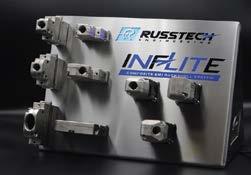
our understanding of plating technology,” said Luc Govaerts, technology director, SABIC Specialties. “This is a true collaboration where both companies benefit from accessing each other’s extraordinary experience, resources and knowledge. Based on our work with Cybershield, we are confident that plated ULTEM resins can benefit aerospace customers, as well as those in the automotive and consumer electronics industries, by delivering key properties such as light weight, high heat resistance and excellent shielding performance.”
At NPE2024 (Booth #S19005) and AIX (Stand #6C51B, 6C51A), SABIC will display a wide range of parts and applications, including connector backshells molded and plated by Cybershield. A demonstrator unit from Russtech Engineering will also be on display at both events. NPE2024 takes placed May 6-10, in Orlando, Fla., and AIX 2024 will be May 26-28 in Hamburg, Germany.
Metso launches modular FIT and Foresight conveyors for fast set-up and increased productivity
Metso is launching productized FIT™ in-plant and Foresight™ overland conveyors for reliable material transportation in the mining industry. The standardized conveyor modules and premium components offer high capacity and layout flexibility as well as substantial savings in time and resources, from feasibility and design to implementation, thereby enabling higher lifetime productivity.
The high-capacity Metso Foresight™ overland conveyors are fixed or relocatable and connect the primary crushing station with the coarse ore stockpile. The Metso FIT™ in-plant conveyors are compatible with Metso FIT™ crushing plants that are designed for the most demanding mining applications.
“The modular FIT™ and Foresight™ conveyors take project ease, speed and productivity to the next level. We have designed these conveyors for easier planning, configuration, installation and
maintenance with a wide range of modules and components. This enables our mining customers to get their in-plant and overland conveying systems up and running faster and brings a quicker return on investment,” says Guillaume Lambert, SVP, Crushing at Metso.
“Thanks to the standardized modular design of the conveyors, we have been able to shorten delivery time by up to 25% and set-up time by up to 15%. Metso premium components are used in the conveyors, and the use of ConveyInsights™ predictive maintenance and flow control technology can help our customers achieve their productivity targets. To improve the feasibility study process on Foresight™ overland conveyors, we developed the William Conveyor Explorer, an application software that is connected to our conveyor module range. It can be found in the new Metso Crush and

Convey Resource Center. Our mining and EPC/M customers can enter their process and route data and then instantly assess multiple options and download the modules they need for efficient planning in their software environment. This development also supports mine electrification programs to reach fast decarbonization plans and targets,” notes Lambert.
To ensure continuous conveyor performance, Metso can provide a wide scope of services ranging from optimization and life-cycle services to premium wear and spare parts. Metso has installed over 1,000km of conveyors globally.
Industry Europe 35
METALS & MINING
New developments in Politics & Economics
Locker manufacturer’s innovation helps schools navigate mobile phone headache
Alockermanufacturer is helping schools navigate the mobile phone headache by launching an innovative storage solution.
Launched this month, Phone Safe by Locit is a wall-mounted steel locker with clear plastic doors and locks. The unique design features individual compartments accessible through a central door, making it easy for teachers or safeguarding staff to monitor and manage mobile phone storage.
The solution benefits pupils, parents, teachers and school managers by providing a secure and convenient storage option for mobile phones during school hours to enable distraction-free learning.
It could also help the UK Government rethink plans to ban mobile phones from classrooms, which have been prompted by widespread concerns that the devices are causing major disruption in schools.
Two prominent distributors from Hull and Coventry have swiftly embraced Phone Safe, placing orders for installation during the upcoming Easter Holidays.
Richard Williams, CEO of Locit, based in Deeside, said the design addressed concerns raised by educators and parents regarding the distraction and security risk posed by mobile phones in schools.
"We understand the challenges schools face in managing mobile phone usage among students," Williams said. "These devices are no longer seen as a luxury but a necessity, allowing children to remain connected with parents and carers. They are safety devices for users that must always be carried.”
"Our solution provides a secure storage option and promotes a distraction-free learning environment, allowing teachers to focus on delivering quality education.
“Furthermore, the new lockers will address the loss and theft of expensive mobile phones and other personal devices that students carry to school."
The new locker designs come in nests of 3, 4, and 5, catering to classrooms of 24, 32, and 40 students in one place. The 10mm clear

door will allow students to see their devices being stored without the worry of them being tampered with and provide peace of mind that no one has access to their device and personal data.
The designs are adaptable and come in every colour to fit any room decor. Another key feature is that these lockers are customisable to have charging plug points, which are usually more sought after in a corporate setting.
Williams added: "We've developed several designs based on school feedback and requirements. Every student's phone will remain safely stored throughout the day. This eliminates the stress and distractions associated with mobile phones in classrooms while offering peace of mind to both students and parents."
Williams believes the Phone Safe solution goes beyond the education sector.
"We envision Phone Safe as a versatile solution that can address similar challenges in various settings, including corporate offices and factories," Williams said.
Locit is a PAS 2060 verified manufacturer, the internationally recognised specification for carbon neutrality published by the British Standards Institution (BSI).
Resignation of Humza Yousaf: A Complex Departure from Scottish Politics

Humza Yousaf's resignation from his political post reverberated across the Scottish political landscape, sending shockwaves through both his party and the broader community. As the Justice Secretary of Scotland, Yousaf had been a prominent figure, known for his impassioned advocacy and his commitment to justice and equality. However, the circumstances surrounding his resignation revealed a complex interplay of personal and political factors.
Yousaf's decision to step down came amidst mounting pressure from opposition parties and within his own party regarding allegations of mishandling a case within his department. While Yousaf vehemently denied any wrongdoing, insisting that he had acted in accordance with established protocols, the controversy surrounding the case had reached a fever pitch, with calls for his resignation growing louder by the day.
For Yousaf, the decision to resign was undoubtedly a painful one. Having dedicated himself to public service for many years, he had become a respected figure within the Scottish government, known for his integrity and determination. Yet, faced with the prospect of becoming a distraction from the important work of his department, he made the difficult choice to step
aside, prioritizing the interests of the Scottish people above his own career aspirations.
In the aftermath of his resignation, there was both sadness and admiration expressed from across the political spectrum. Many praised Yousaf for his years of dedicated service and expressed hope that he would continue to play a meaningful role in public life. Others lamented the circumstances that had led to his departure, questioning the fairness of the political process and the role of media scrutiny in shaping public opinion.
As Scotland grappled with the fallout from Yousaf's resignation, one thing remained clear: his departure left a void in the political landscape that would not be easily filled. Whether he chooses to return to public life in the future or pursue other avenues, the legacy of Humza Yousaf's tenure as Justice Secretary will endure, a testament to his unwavering commitment to the principles of justice, equality, and integrity.
36 Industry Europe NEWS
Looking at some of the runners and riders of the next UK election
Predicting favorites for a UK election involves a blend of political analysis, public sentiment, and the prevailing socio-economic landscape. As of now, with the next UK election looming on the horizon, several key factors and players emerge as potential favorites.
Conservative Party:
Strengths:
Incumbency Advantage: The Conservative Party has been in power since 2010, providing a track record that could either work for or against them, depending on public perception.
Economic Management: Historically perceived as the party of economic stability, particularly important in post-pandemic recovery.
Brexit: While Brexit's long-term effects remain to be seen, successfully executing it could boost Conservative support among Eurosceptics.
Weaknesses:
Public Services: Criticism over austerity measures and underfunding of public services like the NHS could dent their popularity.
Internal Divisions: Differences in opinion regarding social issues and Brexit within the party could lead to internal conflicts, affecting their unity.
Labour Party:
Strengths:
Opposition Advantage: Traditionally, opposition parties tend to gain ground as disillusionment with the ruling party grows.
Social Welfare: Strong support for policies aimed at addressing inequality, such as increased funding for public services and welfare programs.
Green Agenda: Embracing environmental policies could attract younger voters concerned about climate change.
Weaknesses:
Leadership Perception: Perception issues surrounding leadership stability and effectiveness have plagued the Labour Party in recent years.
Brexit Positioning: Labour's stance on Brexit has been perceived as ambiguous, potentially alienating both pro and anti-Brexit voters.
Liberal Democrats: Strengths:
Pro-EU Stance: With a clear pro-EU stance, the Liberal Democrats could attract Remain voters disillusioned by Brexit.
Centrist Appeal: Positioned as a centrist party, they may appeal to voters seeking alternatives to the more polarized positions of the Conservatives and Labour.
Weaknesses:
Electoral System: The first-past-the-post electoral system in the UK can be unkind to smaller parties like the Liberal Democrats.
Past Coalition: Lingering distrust due to their participation in the coalition government with the Conservatives from 2010 to 2015 could affect voter confidence.
Scottish National Party (SNP):
Strengths:
Scottish Independence: Strong support for Scottish independence could rally SNP's base and attract voters disillusioned with Westminster politics.
Shaping the Future: Anticipating the Next USA Election
As the next USA election approaches, the political landscape is fraught with anticipation, speculation, and uncertainty. The outcome of this pivotal event will not only determine the direction of the nation for the next four years but also hold profound implications for global politics, economics, and social dynamics. From the candidates to the key issues at stake, let's delve into the multifaceted dimensions of the upcoming election.
First and foremost, the candidates will undoubtedly play a central role in shaping the narrative of the election. Incumbent President and party nominations, alongside third-party candidates, will vie for the nation's trust and support. The political climate leading up to the election will heavily influence each candidate's platform and rhetoric, as they seek to resonate with voters across the ideological spectrum.
Effective Leadership: Nicola Sturgeon's leadership has been perceived as strong and competent, enhancing the party's image.
Weaknesses:
Independence Divisiveness: While appealing to a significant portion of Scottish voters, the independence issue also polarizes opinions and could alienate some voters.
Record in Government: Criticism over SNP's record in governance, particularly in areas like education and healthcare, could undermine their support.
Others:
Other parties such as the Green Party, Plaid Cymru, and various regional parties could play influential roles in specific constituencies but may struggle to make significant nationwide impacts due to the UK's electoral system.
Conclusion:
The landscape for the next UK election is dynamic and contingent on numerous variables, including economic performance, leadership perception, and unforeseen events. While the Conservative Party holds the advantage of incumbency, Labour's opposition status, coupled with growing concerns over social inequality and the environment, positions them as formidable contenders. Additionally, the Liberal Democrats and SNP could play pivotal roles, especially in scenarios where coalition governments become likely. Ultimately, the election's outcome will depend on how well each party navigates these challenges and resonates with the electorate's priorities.
The incumbent President, if seeking re-election, will campaign on their record, highlighting achievements and initiatives undertaken during their term in office. Conversely, challengers will emphasize areas where they perceive the administration to have fallen short, presenting alternative visions for the future of the country. Additionally, the character and leadership style of each candidate will come under intense scrutiny, with their ability to inspire confidence and unite a deeply divided electorate being of paramount importance.
The issues that dominate the campaign trail will reflect the pressing concerns facing the nation at that time. Economic policy, healthcare, immigration, climate change, racial justice, and foreign relations are likely to be key focal points, each carrying significant weight in the minds of voters. How candidates address these issues and propose solutions will be instrumental in garnering support and shaping public opinion.
Continue reading at: www.industryeurope.com
Industry Europe 37 NEWS
INDUSTRYNEWS
POLITICS & ECONOMICS
New developments in Technology & Innovation
New Sealed Power Relays Extend Switching Current to 36A
OmronElectronic Components Europe has further expanded its sealed-type power relay portfolio with a 36A model extending its 16A and 20A devices. Omron's new sealed type G6QE-1A4 complements the existing G6QE relay lineup for flux protection.
OMRON's G6QE family is capable of opening and closing large currents up to 36A, while also being able to cope with inverter loads. The new G6QE-1A4 type delivers high capacity switching up to 480 VAC, 36A in a compact form. Energysaving characteristics stem from reducing power consumption by approximately 12% compared with rated coil consumption by coil holding voltage (35% of coil rated voltage).
Safety is assured by IEC/EN60079-15 standards conforming to explosion-proof usage, with sealed equipment such as those using refrigerants redesigned for use with flammable green refrigerants to reduce environmental impact. Commercial heating and cooling equipment, heat pumps, and commercial refrigerators need
a larger control current of 16A or more, along with the necessity for sealed relay types. Energy saving is further enabled through low coil consumption enabled by reduced holding voltage.
The new sealed type G6QE-1A4 relays are available now from authorised distributors and stockists throughout the UK and Europe.
About OMRON Electronic Components Europe
On 1 April 2022, OMRON Corporation announced that its’ Electromechanical Components (EMC) division was renamed as OMRON Device and Module Solutions (DMS) in line with the global long-term vision "Shaping the Future 2030.”
OMRON Electronic Components Europe is the European subsidiary of the Device and Module Solutions division. The revised division name reflects a new focus on delivering solutions to customers globally and in Europe. Society is facing new social and environmental changes, and OMRON recognises and is responding to that.

The company aims to offer its’ customers solutions that help them address these universal challenges. In accordance with the long-term strategy, OMRON intends to contribute further to the roll-out of new energy sources and of high-speed communications by enabling the creation of sturdier, advanced and more efficient devices. These devices will make people’s lives easier and better, in particular by achieving carbon neutrality, realizing a digital society and extending healthy life expectancy.
OMRON Electronic Components Europe strongly supports its customers in Western and Eastern Europe through 8 regional offices, a network of local offices and partnerships with specialist, local, regional and global distributors.
Domino and Intrex Deliver Integrated Traceability Solution for Aspen Pharmaceutical Manufacturer

Dgrated, high-speed serialised coding solution for Aspen pharmaceutical manufacturer’s bottle filling and packaging line in Bad Oldesloe, Germany. The bespoke solution, which includes Domino’s V320i thermal transfer overprinter (TTO) and U510 UV laser, provides fully integrated high-speed traceability coding, alongside automated machine vision and rejection.
Aspen, a global pharmaceutical company operating in more than 50 countries, has a strong 170-year heritage specialising in the production of sterile, oral solid dose, liquid, semi-solid, and biological pharmaceutical products, as well as active pharmaceutical ingredients. Domino has worked with Aspen for many years via its Polish distributor, Intrex.
Aspen approached Intrex for an integrated, serialised labelling and coding, and quality control solution for a bottle filling and packaging line running at 150 bottles per minute. The company was looking for a complete
solution from a single supplier, with all equipment easily managed from a single human-machine interface for seamless usability.
“Strict regulatory serialisation requirements in the global pharmaceuticals industry dictate that only perfectly coded products can enter the supply chain,” says Felix Rief, Head of Laser and Extraction, Domino. “Manufacturers risk significant fines and loss of business if sub-standard products leave the factory unnoticed. For Aspen, finding a solution that would offer high-quality labelling and on-product coding, alongside integrated machine vision to ensure the quality of each finished bottle, was imperative.”
The final design includes a V320i TTO for producing serialised traceability labels for HDPE pharmaceutical bottles. An automated machine vision system provides quality control of each label, ensuring that correctly coded labels are dispensed onto the bottles while defective labels are automatically rejected. The base of each bottle is then marked with a Domino U510 UV laser, with a code used for allocation and stock control in Aspen’s warehouse. As a final step, the base codes are checked by a second machine vision system, ensuring that only perfect bottles go into the supply chain.
“To allow our customers to control the entire process in a user-friendly manner via one screen, all components are integrated into a single user interface,” says Stefan Klöpping, Managing Director Intrex Germany GmbH. “Modern software communication is crucial for this type of integration; that’s why we integrate Domino’s printing technologies.”
“The beauty of the overall concept is that all software is cooperated via one HMI,” says Thorsten Hadwiger, Project Manager at Aspen. “We are very, very satisfied with the collaboration with Intrex and Domino, to allow us to receive a complete package from a single source.”
38 Industry Europe NEWS
Rohde & Schwarz presents new R&S NGC100 power supply series with market-leading functions
DCpower supplies are essential throughout the electronics industry to provide the basic requirement of accurate and stable DC power from an AC source that may be subject to fluctuations and surges. The new R&S NGC100 power supply series not only meets this fundamental requirement, but also includes features, functions, and remote-control capabilities to support applications far more complex than steady output power. The series includes one, two, and three-channel models supplying 0-32 V per channel at up to 10 A and 100 W power output. The single-channel R&S NGC101 delivers up to 10 A, the two-channel R&S NGC102 up to 5 A per channel, and the three-channel R&S NGC103 up to 3 A per channel. Small and light, two R&S NGC100 can be mounted next to each other in a 19” rack to optimize test setup footprints.
Each channel in the two and three channel models is fully isolated for maximum flexibility. Users can use the channels independently as fully independent, extremely compact power supplies. Or they can combine the channels in series to increase the maximum potential difference to 96 V, or in parallel for currents up to 10 A. Full galvanic isolation means that channels can be connected to supply balanced circuits without worrying about grounding complications.
The basic performance of the R&S NGC100 as a power supply is excellent, both in terms of output range and output quality regarding low ripple and noise. The application support and additional features exceed expectations for this
class of instrument. The remote sensing function ensures accuracy as users measure the voltage at the input of the circuit being powered, not at the output of the power supply. Users can also program voltage or current changes for a test sequence or avoid steep ramp-ups to protect the device being powered, or simulate operating conditions. The R&S NGC100 puts safety first by providing a full range of protective functions for electrical and thermal properties. Users can set the time and define sequences for switching on channels. Voltage and current values for the circuit to be powered can be logged.
All models of the R&S NGC100 have a standard dual interface with USB and LAN ports, and an optional GPIB interface is available for remote control. For external control, a digital trigger supports input in 1/2 Transistor-Transistor-Logic format to trigger functions such as logging. It is also possible to input sequences of voltage or current changes from an external program. An analog interface with a maximum input of 10V and 20 mA controls near-immediate changes in output voltage or current across the full range.
The R&S NGC100 power supply series replaces the R&S HMC804x power supplies, both as a drop-in replacement and to use together as required. The instruments are part of the R&S Essentials portfolio, available from Rohde & Schwarz and selected distribution channel partners. Rohde & Schwarz will demonstrate the new R&S NGC100 power supply series at embedded world Exhibition in Nuremberg at booth 4-218 in hall 4.
Flexible Solutions for Efficient Cable Compounds Production
Atwire 2024 (April 15-19, 2024, Düsseldorf/ Germany) Coperion will present flexible solutions for the efficient production of high-quality compounds for a wide variety of cable applications at booth 13A44 in hall 13. Coperion’s extrusion technology, such as the ZSK twin screw extruder and the KP Kombiplast Compounder, has proven ideal for producing a broad variety of cable compounds for different applications, for example HFFR, XLPE Silan cross-linkable PE or PVC. Coperion also offers trusted solutions for the manufacturing of high-voltage cable compounds. Together with Coperion K-Tron feeders for high accuracy feeding of all ingredients as well as gentle conveying and material handling technology, manufacturers benefit from integrated turnkey solutions from one source.
ZSK Extruder as Suitable Solution for Single-Stage Cable Compounding
The high performance ZSK twin screw extruder represents a flexible and economical system for the production of different cable compounds. High throughput rates, gentle product handling for a high quality of the end products and high energy efficiency thanks to its low specific energy requirement are only three advantages of this extruder series. In addition, the modular
design of the process section allows for individual configuration for the varying requirements of different types of cables such as semiconductive carbon black compounds, XLPE, HFFR, Silan cross-linkable PE, fluoropolymers and TPE. Beside the process section all peripheral equipment can be adjusted according to the process needs. This gives manufacturers the flexibility they need for an efficient and reliable process. Homogeneity of the cable compounds is key when producing high quality products. The ZSK extruder is ideally suited for this task as the good mixing properties effectively avoid agglomerations. This ensures excellent dispersion of even hard to handle ingredients. Together with the high accuracy Coperion K-Tron feeders and reliable peripheral equipment Coperion offers a complete system that gives manufacturers the possibility to produce high quality cables with the appropriate characteristics in terms of durability, heat or wear resistance at a good price/performance ratio.
Efficient Two-Stage Compounding Process for PVC Cables with the KP Kombiplast Compounder
With the Kombiplast KP Two-Stage Compounder and the Eccentric Pelletizer EGR
Coperion offers an economical and reliable compounding and pelletizing solution. The Kombiplast KP combines a ZSK twin screw extruder with a single-screw discharge screw ES-A for gentle pressure build-up of shear-sensitive products. The EGR eccentric pelletizer is seamlessly connected to the ES-A and ensures an even material flow through the die plate. The optimized design allows an easy integration of a screen changer and an efficient pellet transport. Thanks to the EGR’s optimized knife rotor the dust content of PVC pellets can be effectively minimized. The system set-up is characterized by very gentle operation and short residence time for highest product quality. High flexibility in terms of product changes and machine modifications make the system particularly versatile.
“Coperion is a long-standing partner of cable manufacturers and provides with the Coperion technology an ideal and flexible solution for different requirements and a variety of cable compounds. Manufacturers benefit from long-term experience, comprehensive process know-how and a technology that achieves the highest product quality and maximum economic efficiency”, so Matthias Link, Business Segment Manager, PVC & Cable compounds at Coperion.
Industry Europe 39 NEWS INDUSTRYNEWS
TECHNOLOGY & INNOVATION
New developments in Transportation
Wärtsilä secures China’s largest-ever methanol newbuild order
Technology group Wärtsilä will supply the methanol-fuelled auxiliary engines for five new container vessels for COSCO Shipping Lines Co., Ltd and seven new container vessels for Orient Overseas Container Line. Each vessel will operate with three 8-cylinder and two 6-cylinder Wärtsilä 32M engines. This is the Chinese maritime sector’s largest order to date for methanol-fuelled newbuild vessels. The order was booked by Wärtsilä in December 2023.
To complement the solution, the ships will be equipped with the Selective Catalytic Reduction (SCR) exhaust cleaning systems and alternators. These will be supplied through Wärtsilä’s joint venture company, CWEC (Shanghai) Company Ltd. (‘CWEC’).
The Wärtsilä 32M methanol-fuelled engine has received type approval certificates from several classification societies around the world. Studies have shown that using methanol instead of heavy fuel oil can cut CO2 and other GHG emissions. In particular, green methanol derived from renewable sources could achieve a further reduction in carbon footprint and thus becomes one of the central decarbonisation solutions for carriers in the future.
"With decarbonisation a major priority for the maritime industry, sustainable fuels, such as methanol, will play a vital role in helping shipping to reduce its greenhouse gas emissions,” says Roger Holm, President of Wärtsilä Marine and Executive Vice President at Wärtsilä Corporation.
Holm continues: “As a leader in shaping the decarbonisation of marine and energy industries, Wärtsilä continues to make strong investments in developing new fuel flexible technologies and products which enable the industry’s transition towards greener fuels. It’s why we value our long-term relationship with COSCO Shipping Lines and OOCL and are strongly aligned with their vision in accelerating towards net-zero emissions shipping.”
The Orient Overseas Container Line’s 24,000 TEU ships are to be built at the
Huntsman launches new SHOKLESS™ polyurethane systems to help protect electric vehicle batteries
Automotive
experts from Huntsman have added a series of new lightweight, durable polyurethane foam technologies to the company’s battery solutions portfolio that have been developed for the potting and fixation of cells mounted in electric vehicle (EV) batteries. The new range also includes products that can be used as a moldable encapsulant in battery modules or packs.
Auto Industry Design Facility: Male Chief Engineer Shows Car Blueprints Female Software Design and Integration Engineer. Electric Vehicle Platform Chassis Concept Has Wheels, Engine and Battery; Shutterstock ID 1808746072; purchase_order: GAP platform; job: GAP platform; client: Huntsman; other:
The new SHOKLESS™ foam systems can offer a flexible choice for helping to safeguard the structural integrity of EV batteries in case of impact or a thermal event. The product family includes a range of low to high density foams that can be used via common polyurethane dispensing processes and can offer a wide processing window for extra handling flexibility. These new solutions can help provide thermal as well as structural protection at a cell, module, or pack level combined with fast processability

compared to non-polyurethane alternatives. The moldable encapsulant version of the SHOKLESS™ system can further expand design and manufacturing options for EV battery manufacturers and OEMs.
With robust mechanical properties, the new SHOKLESS™ systems can offer very good compression and tensile performance with high elongation to failure. Elastic performance can remain stable at different operating temperatures ranging from -35ºC to 80ºC*. The new systems have also been developed to be easy to work with thanks to their low viscosity and ability to cure quickly at low temperatures.
Alex Stepuk, Global Market Segment Leader Automotive at Huntsman, said: “As the drive to create more electric vehicles continues to accelerate, we are applying our know-how to the challenges facing automotive manufacturers and developing new products that help to address clearly identifiable gaps in the market. We are delighted to extend the breadth of our SHOKLESS™ portfolio into the electric vehicle battery sector.”
SHOKLESS™ polyurethane systems are generally compatible with a number of different manufacturing methods such as open- and
closed-pour (injection) and cold-cure molding. Certain products in the range can also be dispensed with high pressure equipment. Huntsman also offers simulation and modeling capabilities that can help customers customize and optimize processing parameters, and the structural and thermal performance of the materials, so they can get the very best out of the SHOKLESS™ system they select.
Huntsman is a global leader in MDI-based polyurethanes, serving automotive customers along the value chain. Huntsman delivers innovative, value-added solutions to the world’s best-known car brands. Specialisms include lightweight, enhanced comfort and working towards sustainability ambitions in seating, interior trim, acoustic insulation, EV batteries and composite panel applications.
For more information about SHOKLESS™ systems, please email: polyurethanes_eu@ huntsman.com.
You can also find out more at the Battery Show Europe by visiting Huntsman at 4-D80. The Battery Show Europe takes place from 18-20 June at Messe Stuttgart, Germany. Further information is also available here: https:// www.huntsman.com/products/shokless
40 Industry Europe NEWS
XPO
Logistics holds fourth annual UK Female Drivers Forum at company national distribution centre in Crick, Northamptonshire
XPO, a leading provider of innovative and sustainable end-to-end logistics solutions across Europe, is holding its fourth annual Female Drivers Forum today at the company’s national distribution centre in Crick, Northamptonshire.
As in previous years, all XPO Logistics female drivers are invited to attend the Forum, which is designed to provide a safe space for drivers to bring any matters of concern to the attention of XPO´s senior management. It is also a valuable networking opportunity for female drivers. Every year, the XPO Female Drivers Forum has a core theme and agenda, with this year’s focus on the creation and implementation of a ‘Driver Wellbeing Plan’.
Lynn Brown, vice president, human resources— UK and Ireland, XPO Logistics, shares her insights on the Forum's importance: “We are incredibly excited to convene our fourth Female Drivers Forum here at XPO. This initiative is a key part of our ongoing work to create a more diverse and inclusive workplace and builds on the success of previous forums. I am always amazed at the insights and great ideas that come out of this event.
Wärtsilä
“Discussions like these are the ideal place to hear, first-hand, how we, as a company, can accelerate our journey to becoming the employer of choice for female drivers, both in the UK and Ireland as well as abroad. They’re an opportunity for us to actively engage with our drivers and understand the challenges and barriers women face in the traditionally male-dominated logistics industry,” she added.
Previous XPO Female Driver Forums have led to substantial changes in the company. For example, there is now a higher number of female driver trainers, which was identified as an area that could help XPO Logistics attract and retain more female drivers. The company also now provides a newly designed female driver´s uniform that helps make work more comfortable.
Cyd Bell, fuel tanker driver —UK and Ireland, XPO Logistics, said: “I always enjoy attending the forums as an opportunity to discuss common ground with other female drivers across our company. At the last Forum, we got to talk openly about various topics, including menopause and how we can be supported in the workplace. I am looking forward to discussing health and wellbeing issues this month.”

In addition, XPO Logistics has revised and implemented new family-friendly policies. While not specific to female drivers, these policies have proven helpful in recruiting and retaining women in the workforce.
Attendance at the Forum increased yearly, and this year is no different. The full agenda includes interactive sessions, open conversations on operational matters, and overall health and wellbeing discussions.
XPO Logistics is a leading innovative supply chain company in Europe, offering end-to-end logistics solutions that combine full-truckload, lessthan-truckload, pallet distribution, last-mile delivery, global freight forwarding, and warehousing services. The company tailors its solutions to the specific needs of its customers in a wide range of industrial and consumer sectors.
simulator technology delivers high quality training and research at newly inaugurated Sharjah Maritime Academy UAE
Technology group Wärtsilä has supplied its latest simulator technology to the prestigious Sharjah Maritime Academy. Located in Khorfakkan, United Arab Emirates, the academy, is one of the region’s leading providers of quality maritime studies, training and research. The advanced simulation facility, which was recently inaugurated, represents a sustainable development that serves to strengthen the position of the Sharjah Maritime Academy as a global maritime centre for training, innovation, research and development.
“Our aim is to create both a scientific and practical environment for students and to provide the capabilities that qualify them to reach the highest standards of quality in the field of maritime transport,” says Dr. Hashim Abdullah bin Sharhan Al Zaabi, Chancellor of the Academy. “For this we need the latest simulator technology to enable us to conduct training to the highest international standard and offer a platform for collaboration with other leading
maritime organisations, which is why we have partnered with Wärtsilä to deliver this for us.”
The comprehensive suite of navigation, engineering, communications and Vessel Traffic Services (VTS) simulators includes full mission, part task and classroom trainers for all levels of training and research, as well as modelling and content creation tools to enable the highly skilled maritime faculty team to offer a complete range of services to national and international clients. The scope includes two full mission navigational bridge simulators with 360-degree visualisation, state-of-the art offshore specific bridge systems, and the first installation of Wärtsilä’s new simulation bridge equipment configuration which represents the very latest and highest digital navigation operational standards.
The advanced simulation facility also features the world’s first commercial maritime mixed reality chromakey vessel handling appli -
cation in the form of two integrated offshore vessel and tug simulators with motion platform for absolute immersion in the synthetic learning environment.
“We are truly honoured to have been selected by the Sharjah Maritime Academy to support their vision of establishing a maritime centre of excellence, and to deliver world class teaching, professional development, and lifelong learning to their students, graduates and maritime’s future leaders. As our industry’s digital and decarbonisation transformation gathers pace, facilities such as this can lead the development of new training standards and methodologies using the latest simulation technologies from Wärtsilä,” comments Neil Bennett, General Manager, Global Simulation Sales – Wärtsilä Marine.
The simulation facility was inaugurated by H.E. Dr. Sheikh Sultan bin Muhammad AlQasimi, Chairman of Sharjah Maritime Academy, Ruler of the Emirate of Sharjah, and Member of the Federal Supreme Council of the United Arab Emirates in February 2024.
Industry Europe 41
NEWS
INDUSTRYNEWS
TRANSPORTATION
New developments in the Transportation
Top Vehicle Tracking Solutions for Commercial Fleets
Navigating the intricate highways of fleet management, businesses are on a perpetual quest for the optimal route to efficiency and cost-effectiveness. In the bustling world of commercial transport, the beacon that guides this journey is advanced vehicle tracking technology.
As the cornerstone of modern fleet operations, the right tracking solution can transform a sea of logistical challenges into a streamlined path of productivity and precision.
Let’s take a look into the top vehicle tracking solutions for commercial fleets and discover how cutting-edge technology is steering businesses toward unprecedented success, ensuring every journey is not just tracked, but truly optimised.
RAM Tracking: Best for Limited Budgets
RAM tracking vehicle tracker emerges as the leading cost-effective solution for businesses managing commercial fleets, especially those working within a constrained budget.
Priced at an affordable rate, RAM Tracking provides an efficient plugand-play system, simplifying the installation process and reducing the need for extensive maintenance.
This makes it an attractive option for small to medium-sized enterprises that require an effective tracking system without the high costs typically associated with advanced telematics solutions.
Despite its affordability, RAM Tracking does not compromise on functionality. It offers a range of features typically found in more expensive systems, such as geofencing, which allows businesses to set virtual boundaries and receive alerts when a vehicle enters or leaves a specified area. This feature is particularly useful for enhancing security and monitoring compliance with operational policies.
Verizon Connect: Best for Industry-Specific Firms
Verizon Connect, another top contender, tailors its services to meet the nuanced demands of industry-specific firms. With a starting price of around $20 per vehicle per month, it offers a mix of plug-and-play and hardwired installation options.
Verizon Connect stands out for its dynamic routing and unauthorised break or detour tracking, making it a robust solution for enterprises seeking extensive data collection and analytics.
INDUSTRYNEWS
Samsara: Best for Startups and Small Businesses
Samsara, with its pricing at about $40 per vehicle per month, is an excellent choice for startups and small businesses. It provides a plug-and-play system that facilitates easy implementation.
Known for its very fast refresh rates and AI-powered dash cams, Samsara offers a comprehensive platform that supports ELD compliance and provides real-time vehicle diagnostics, making it a smart investment for businesses prioritising fast and reliable data.
Azuga: Best for Improving Driving Standards
Azuga, priced at $25 per vehicle per month, excels in enhancing driving standards through detailed behaviour analytics. Its solution includes plugand-play hardware that offers insights into driver performance, helping businesses to improve safety and efficiency.
Azuga’s focus on driver behaviour and route optimization makes it a top choice for firms aiming to promote safer driving practices and optimise operational workflows.
Teletrac Navman: Best for Vehicle Maintenance
For companies that prioritise vehicle maintenance, Teletrac Navman, costing around $30 per vehicle per month, provides a hardwired solution that focuses on managing vehicle health.
It offers features like automated maintenance alerts and diagnostics, ensuring that fleet operators can prevent costly repairs and extend vehicle longevity.
Conclusion
Choosing the right vehicle tracking solution depends on your business’s specific needs, budget, and operational goals. RAM Tracking stands out for its affordability and comprehensive tracking capabilities, making it a top choice for businesses looking to optimise their fleet operations without a hefty investment.
Each of the solutions mentioned offers unique features tailored to different aspects of fleet management, from improving driving standards to enhancing vehicle maintenance. By selecting the appropriate vehicle tracking system, businesses can significantly improve their operational efficiency, reduce costs, and ensure the safety of their fleets.
ABB secures $150 million traction contract to power Australia’s QTMP trains and announces new facility in regional Queensland
ABB has been awarded a USD$150 million contract in February 2024 to supply complete traction packages, as well as engineering and service support for each of the 65 six-car passenger trains to be delivered by the Queensland Train Manufacturing Program (QTMP) in Australia. As part of the contract, which was awarded by Hyundai Rotem Company (Korea), ABB will also establish a Traction Center of Excellence to support with the production and assembly of the traction packages. Hyundai Rotem Company are a joint venture partner with Downer EDI Rail Pty Ltd, the country’s leading
provider of through-life asset management for passenger rollingstock.
Downer EDI Rail Pty Ltd was awarded a contract by the Queensland Government to manufacture 65 new electric multiple units (EMUs), a type of train that has multiple carriages or cars, each with its own electric propulsion system. All 65 of these advanced passenger trains are expected to be fully operational by 2032, in time for the Brisbane 2032 Olympic and Paralympic Games. They will be deployed across the Southeast Queensland rail network, including the Cross River Rail, a new rail line in Brisbane. The
QTMP will also support Queensland's population and economic growth with investment in new manufacturing facilities and supporting more than 1,300 jobs in construction, manufacturing and operation over the life of the program.
Continue reading at: www.industryeurope.com

NEWS
TRANSPORTATION
42 Industry Europe

